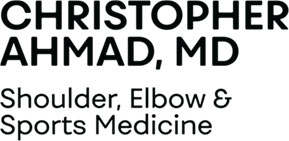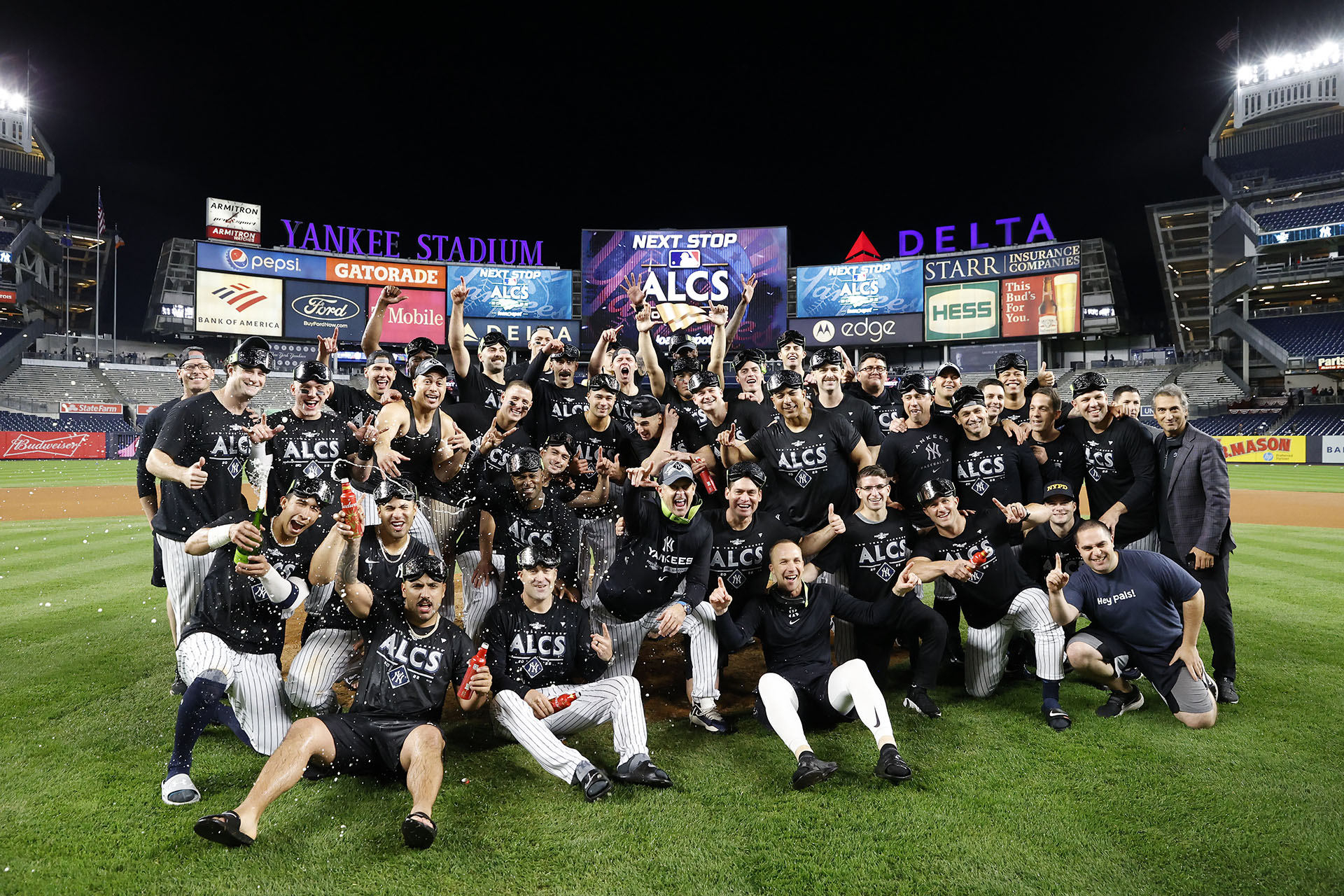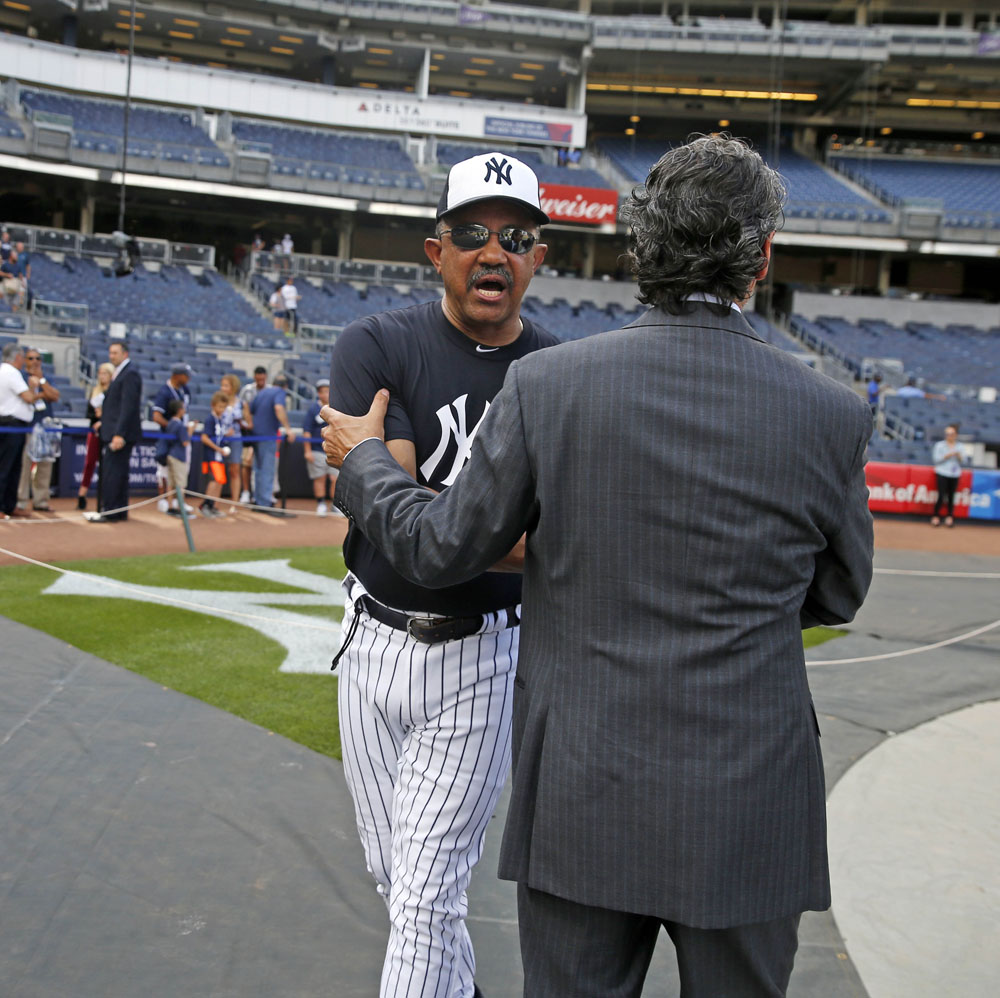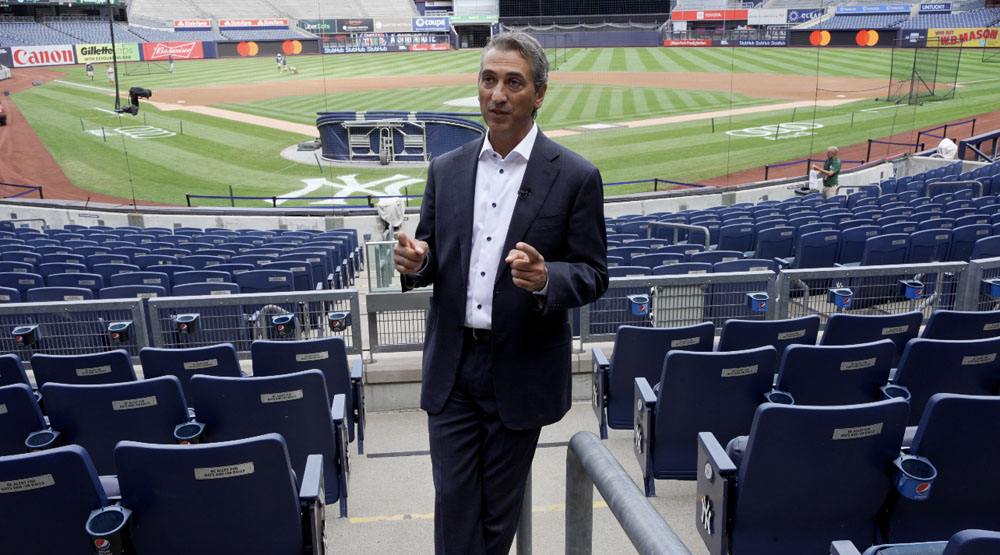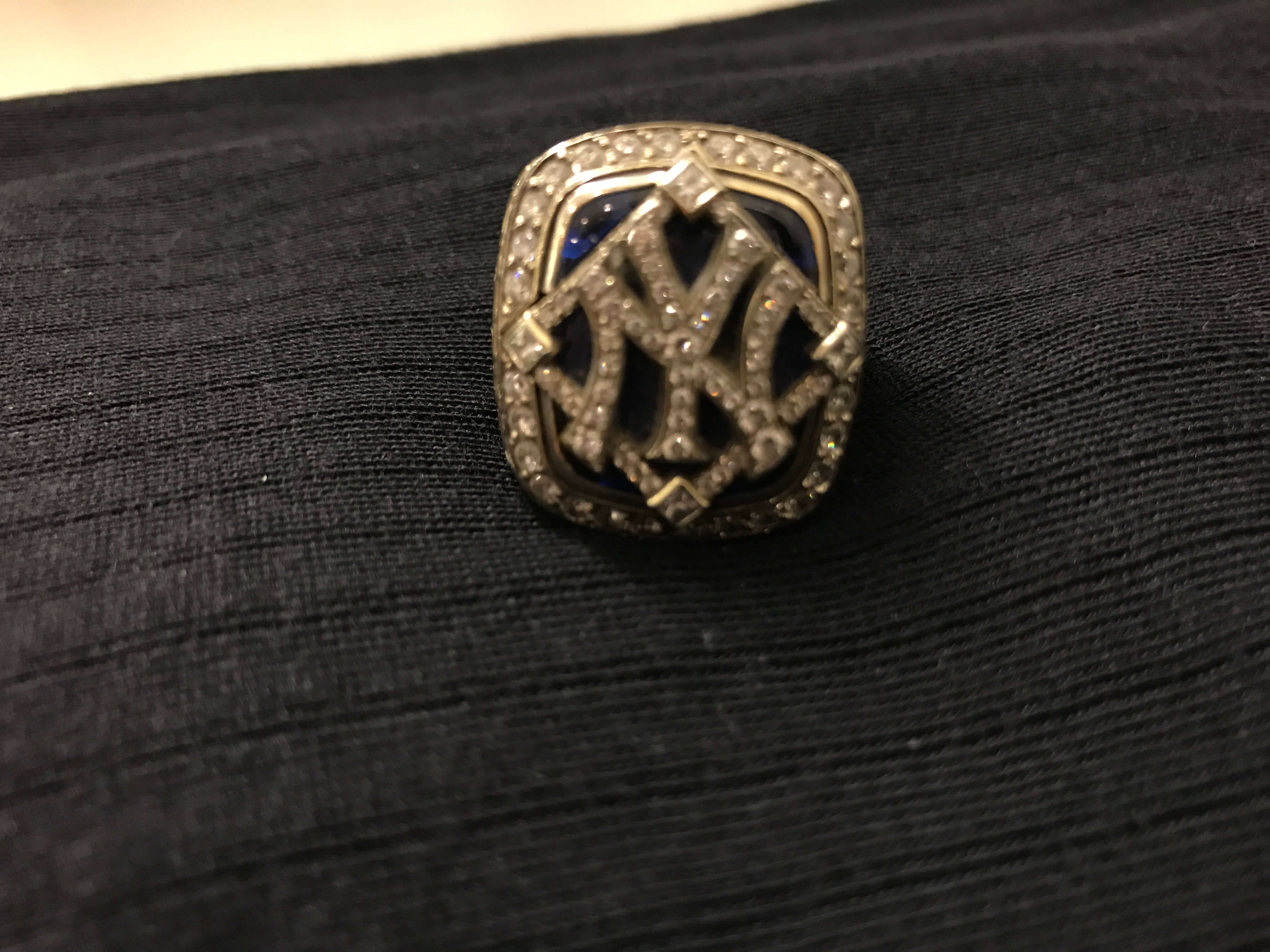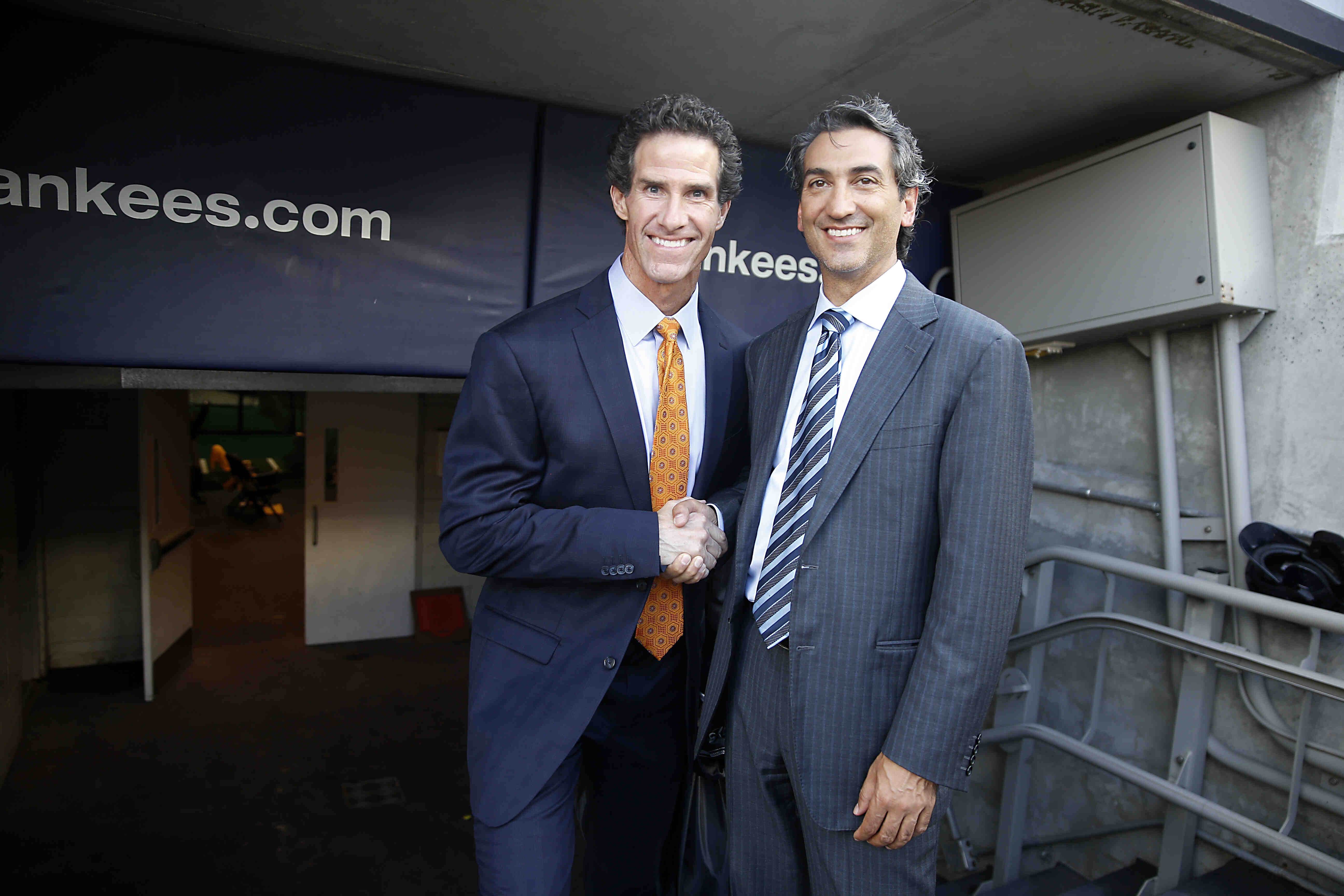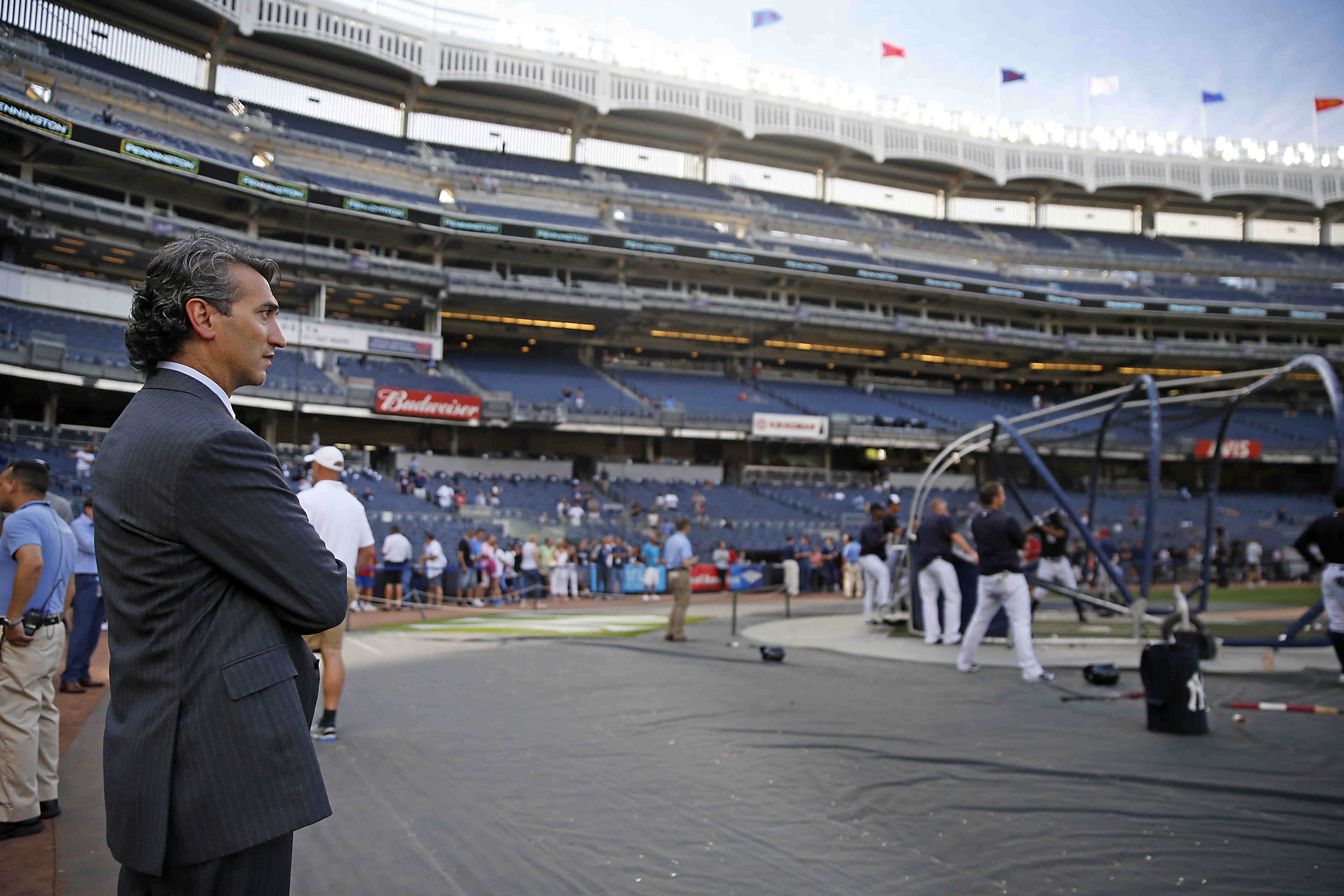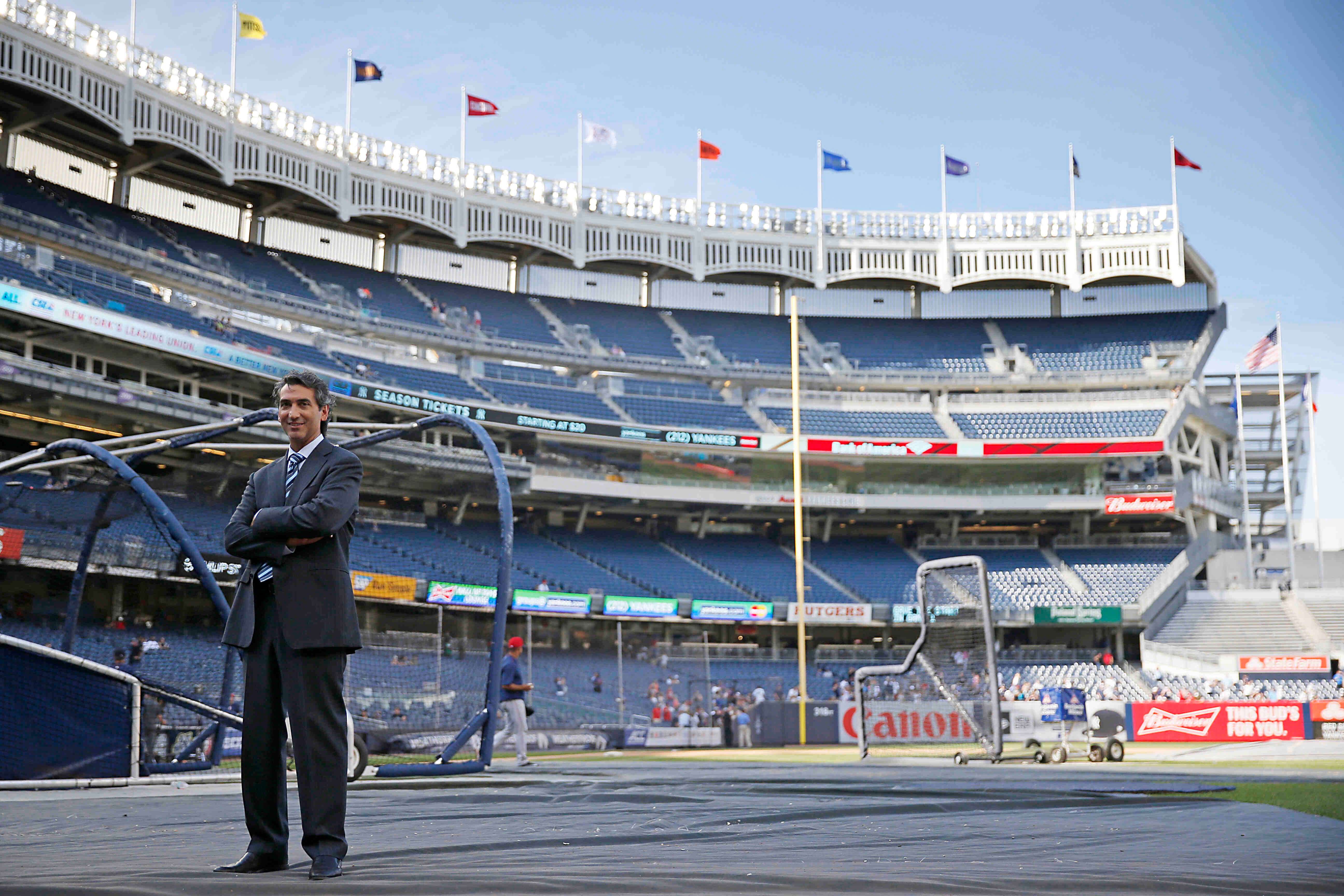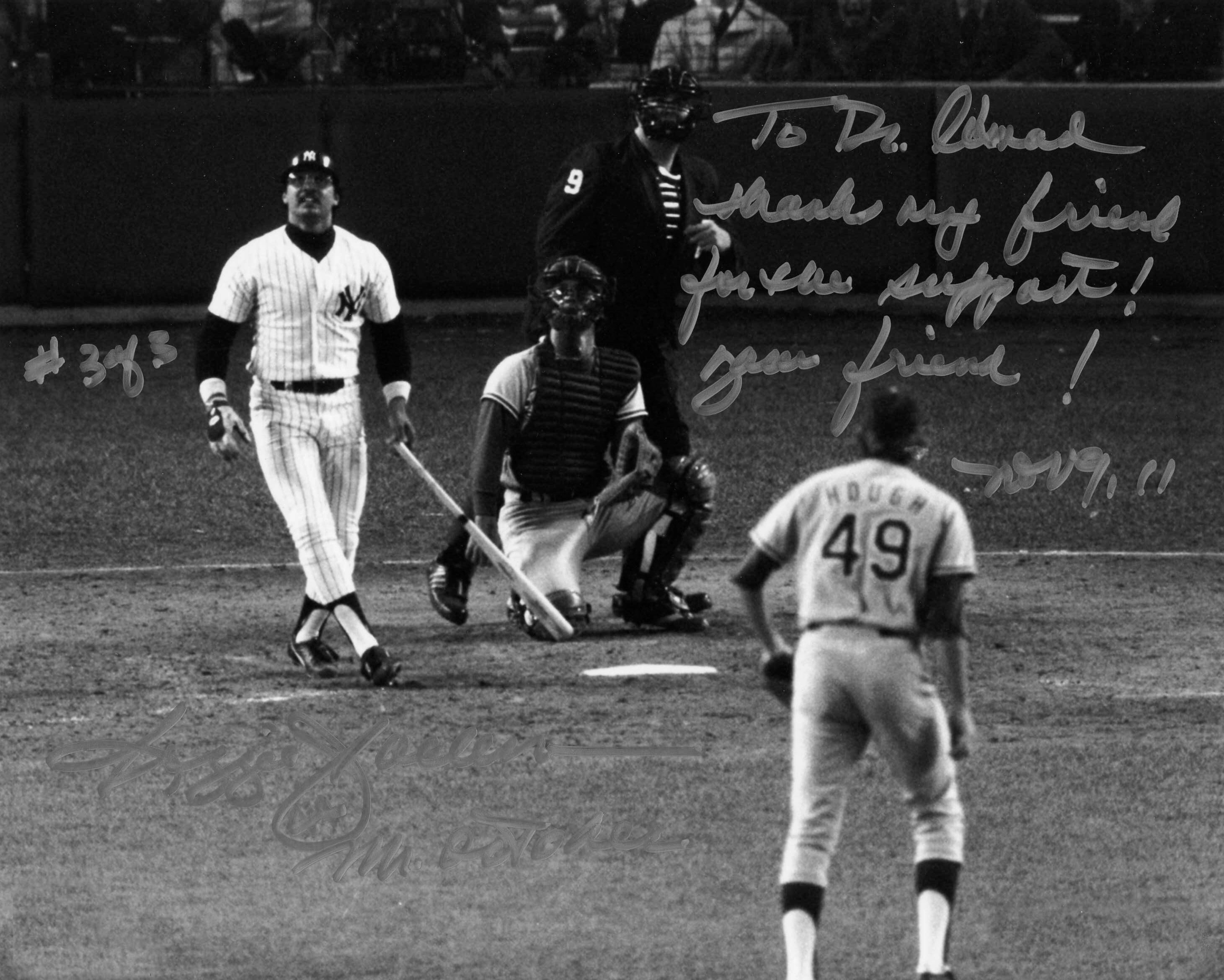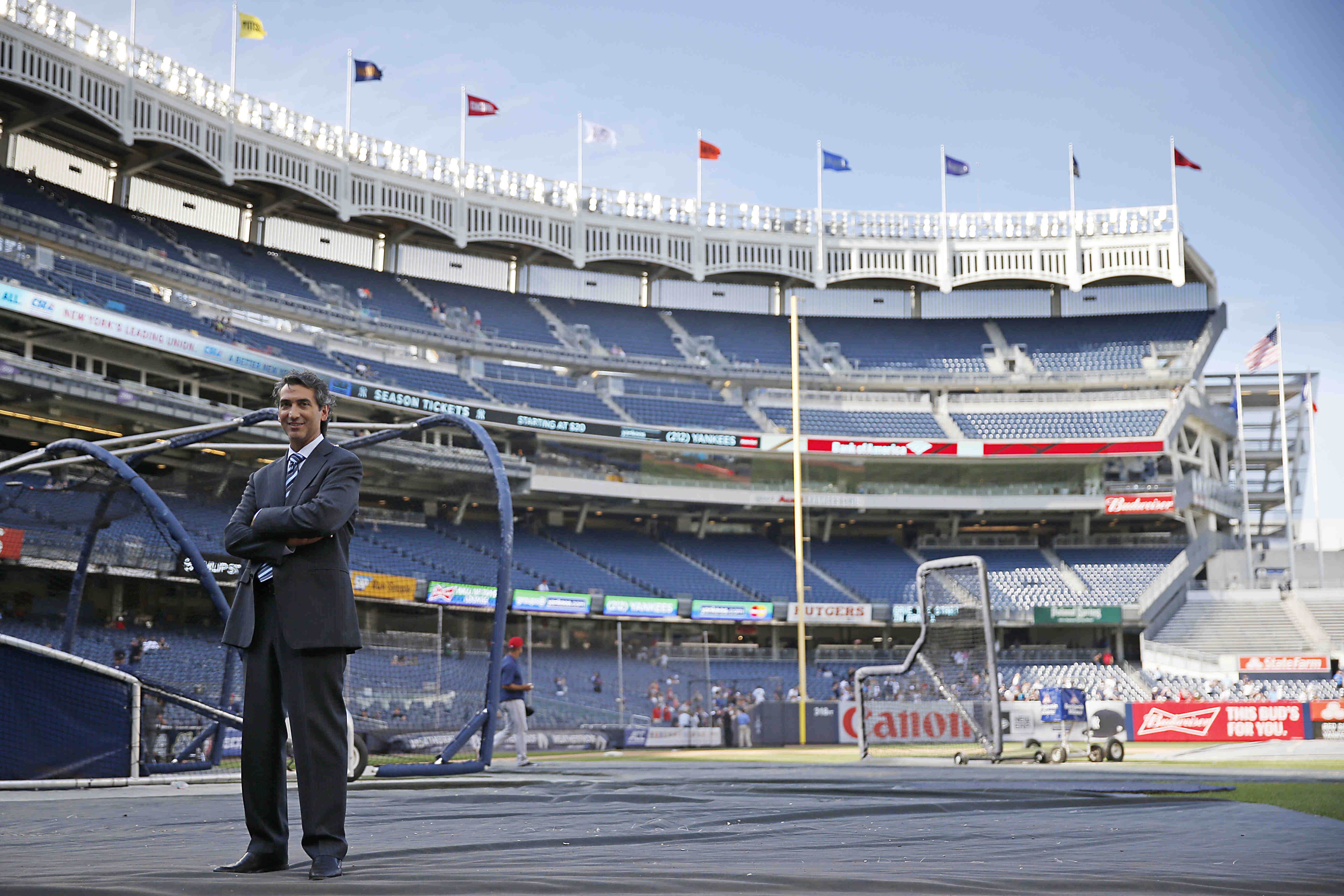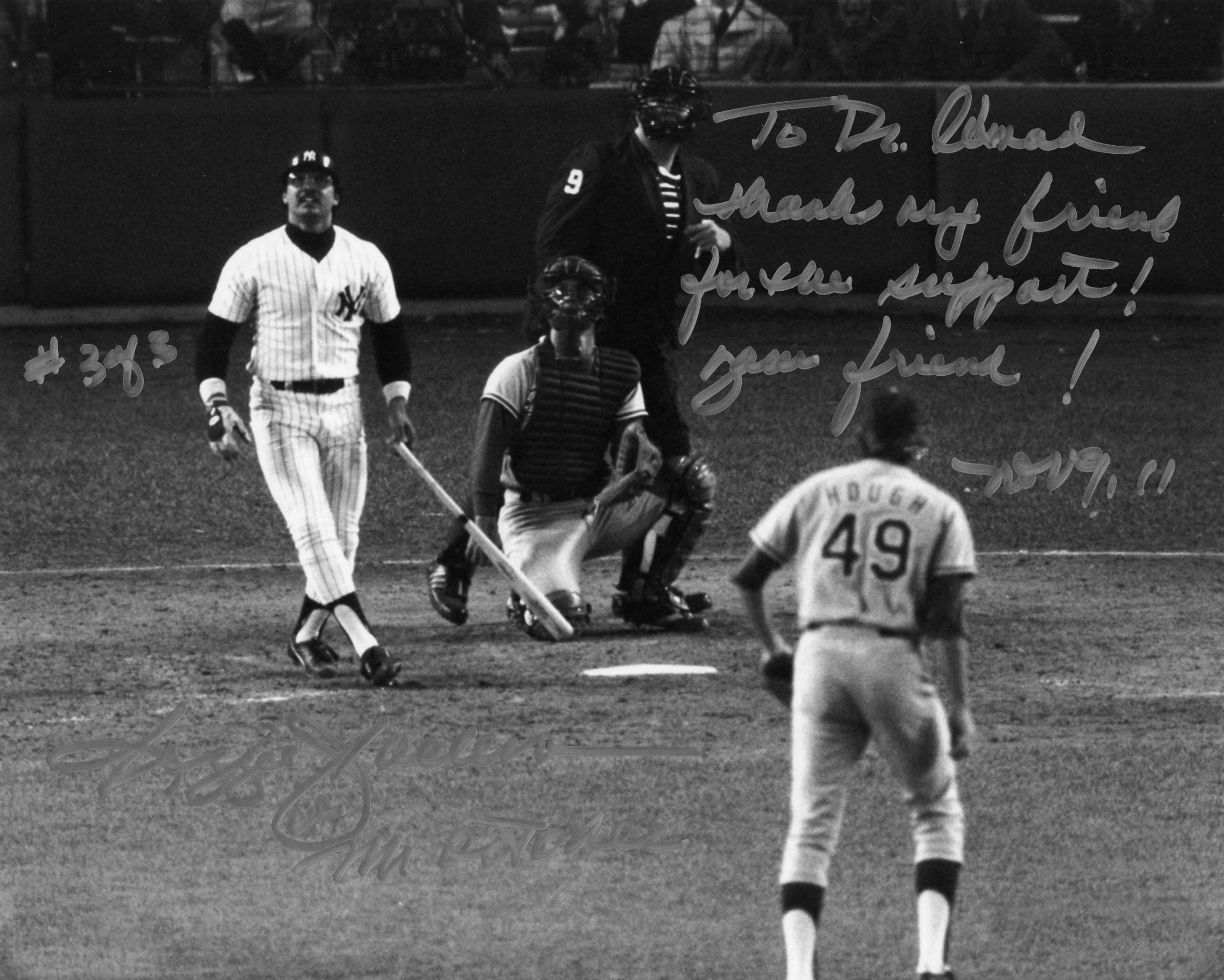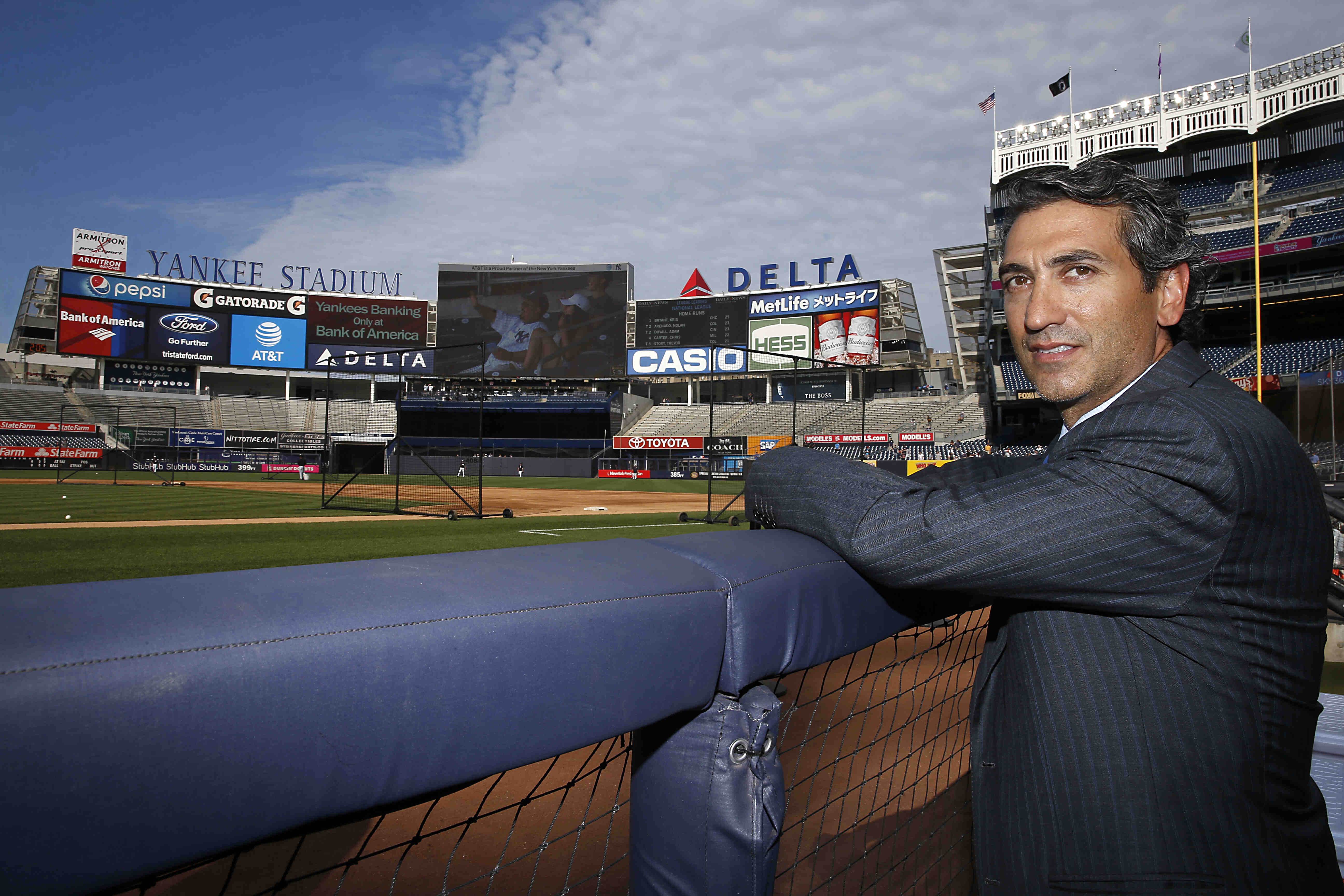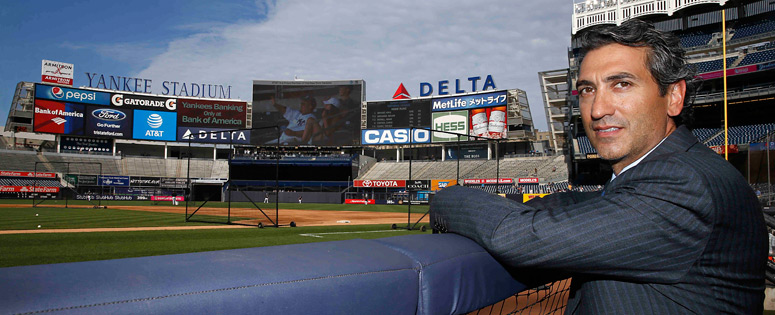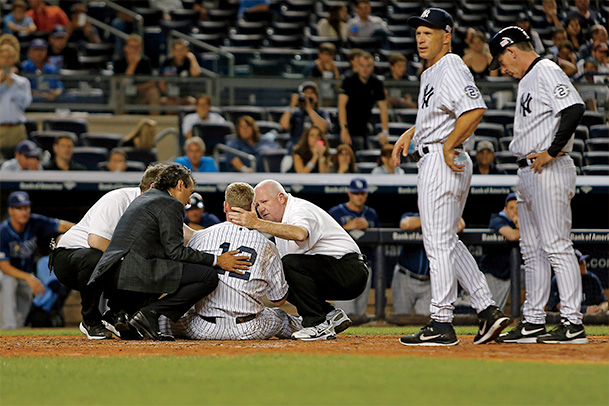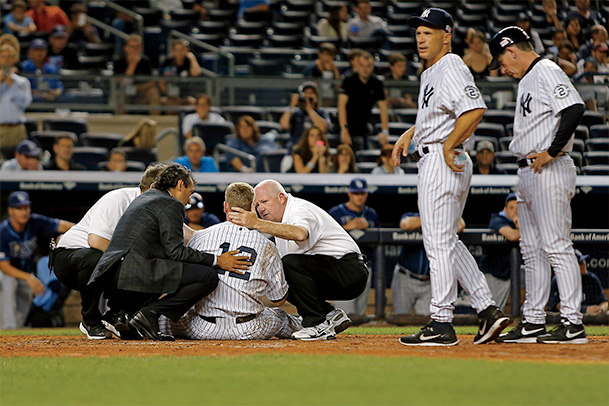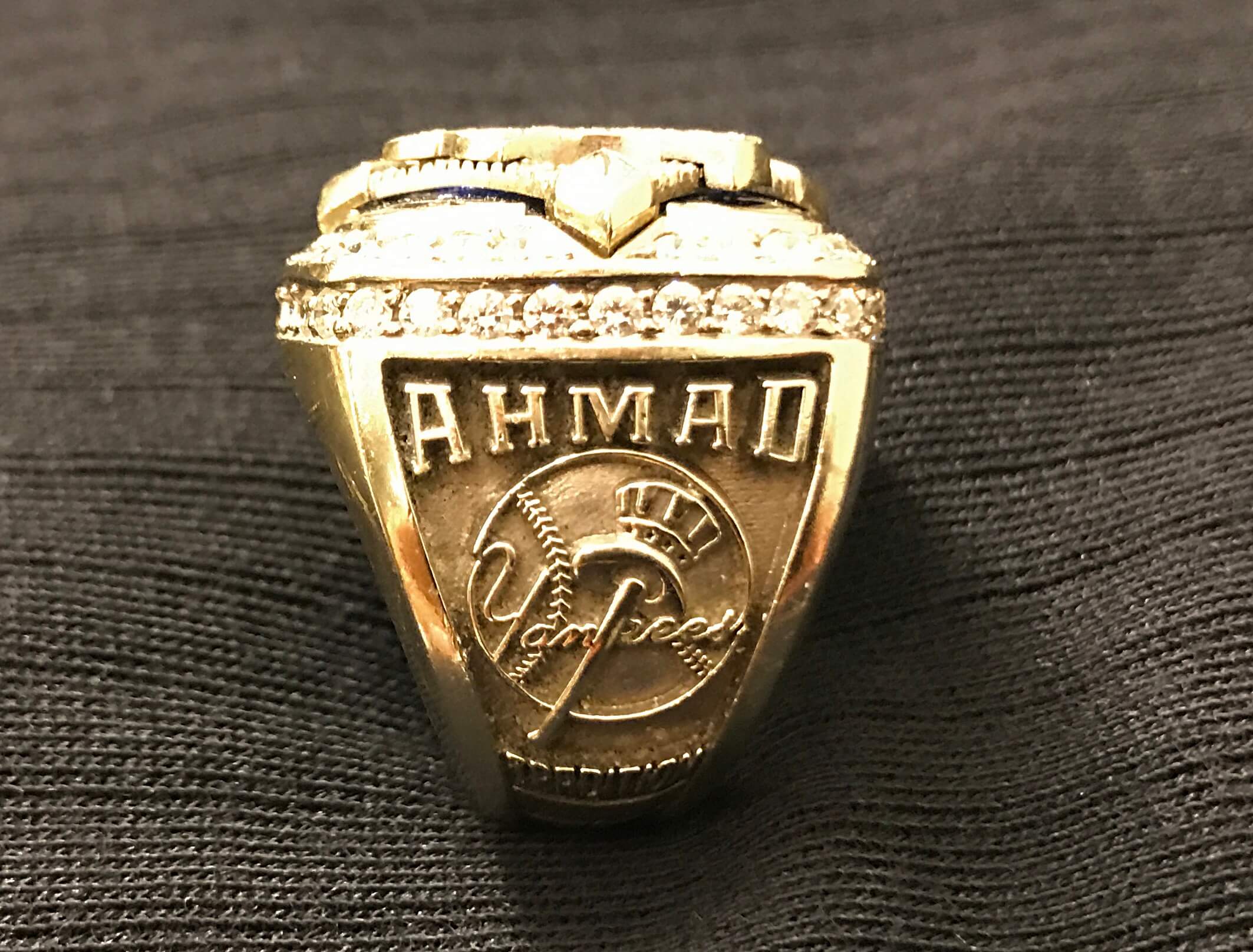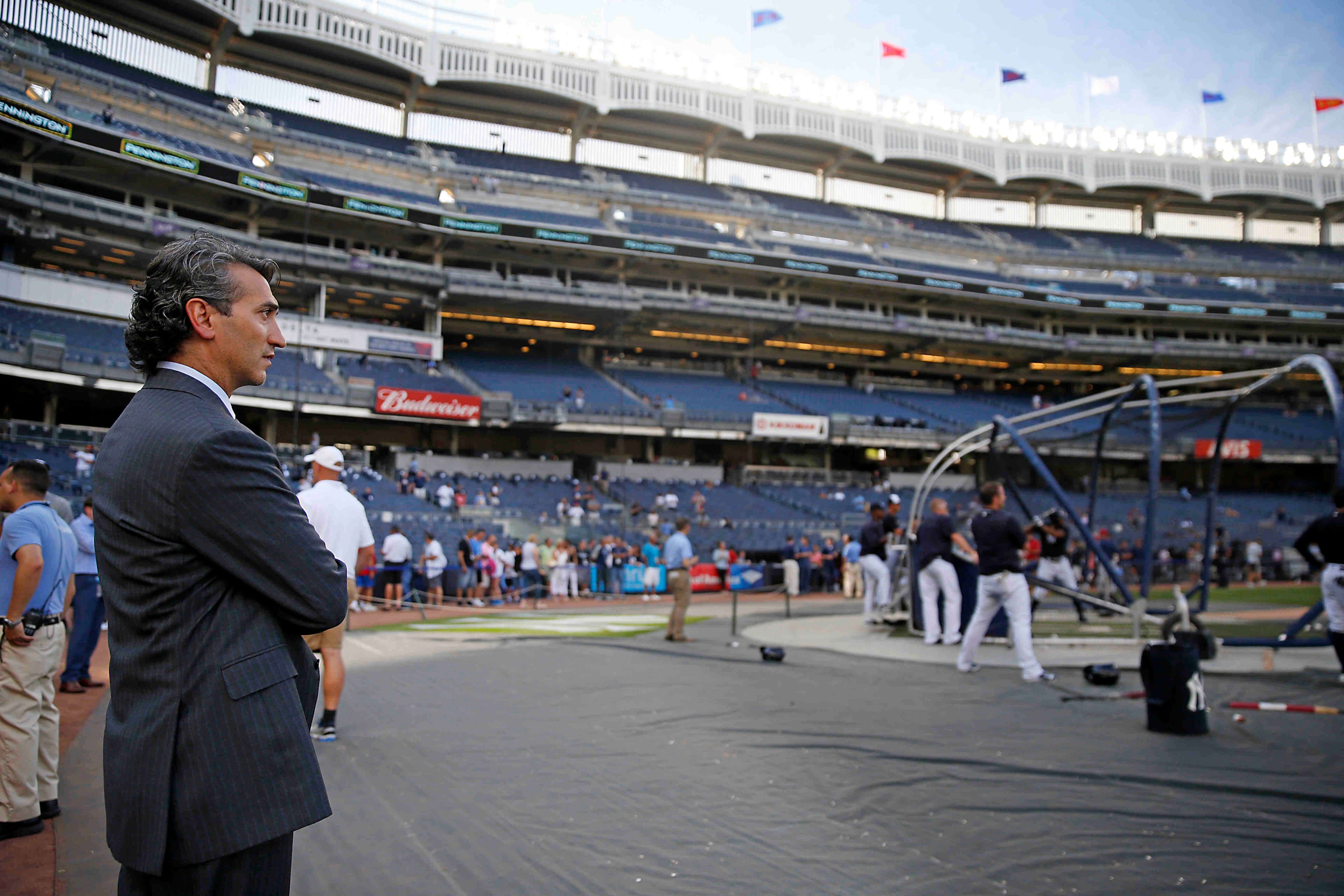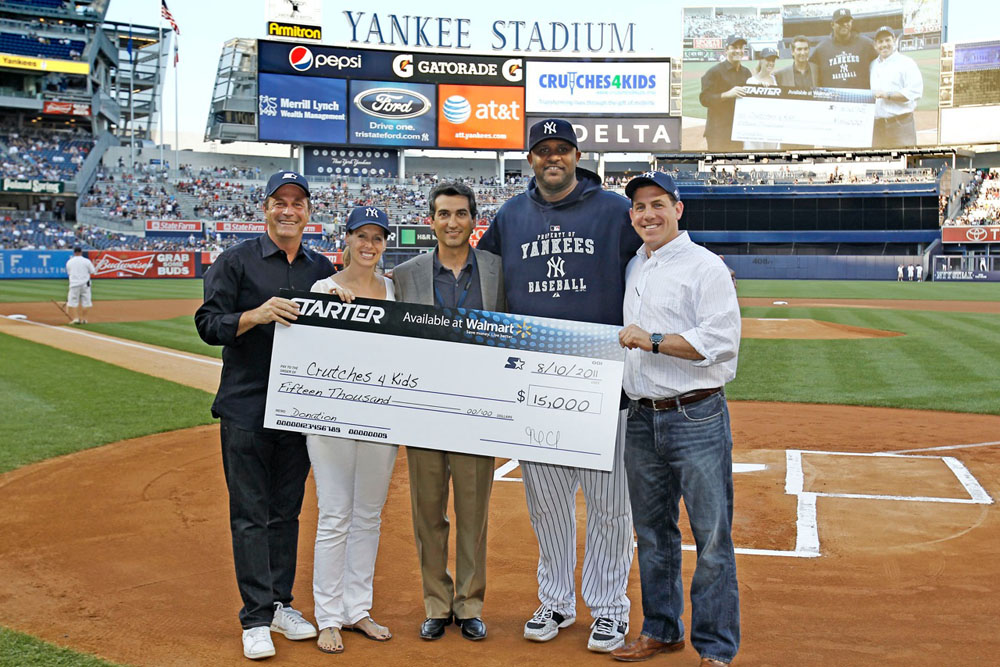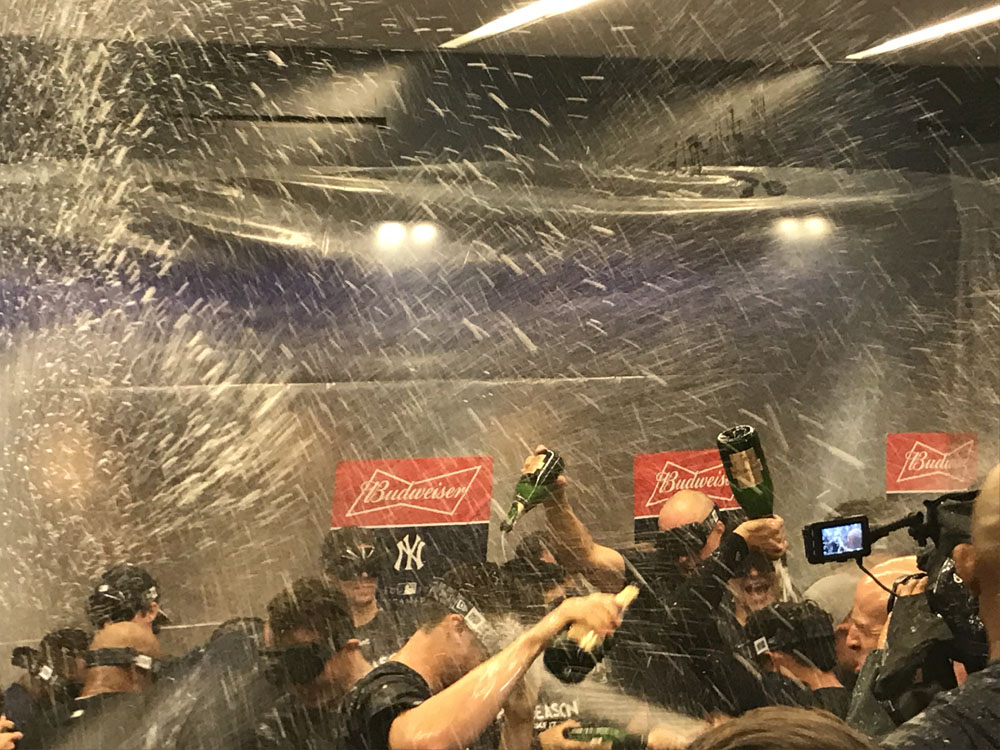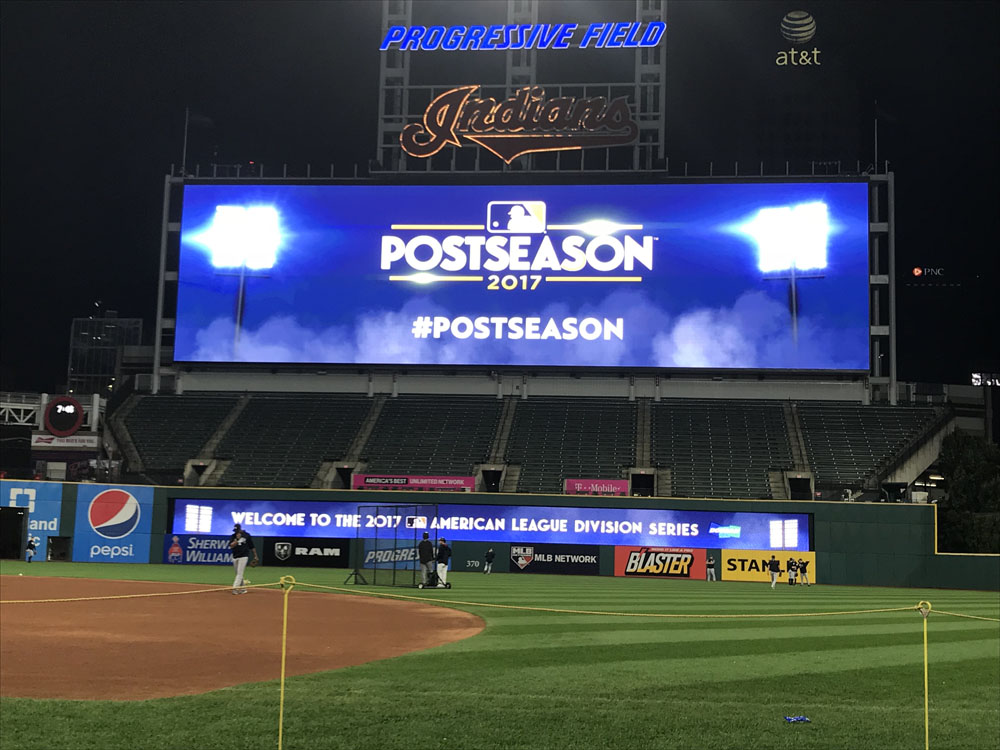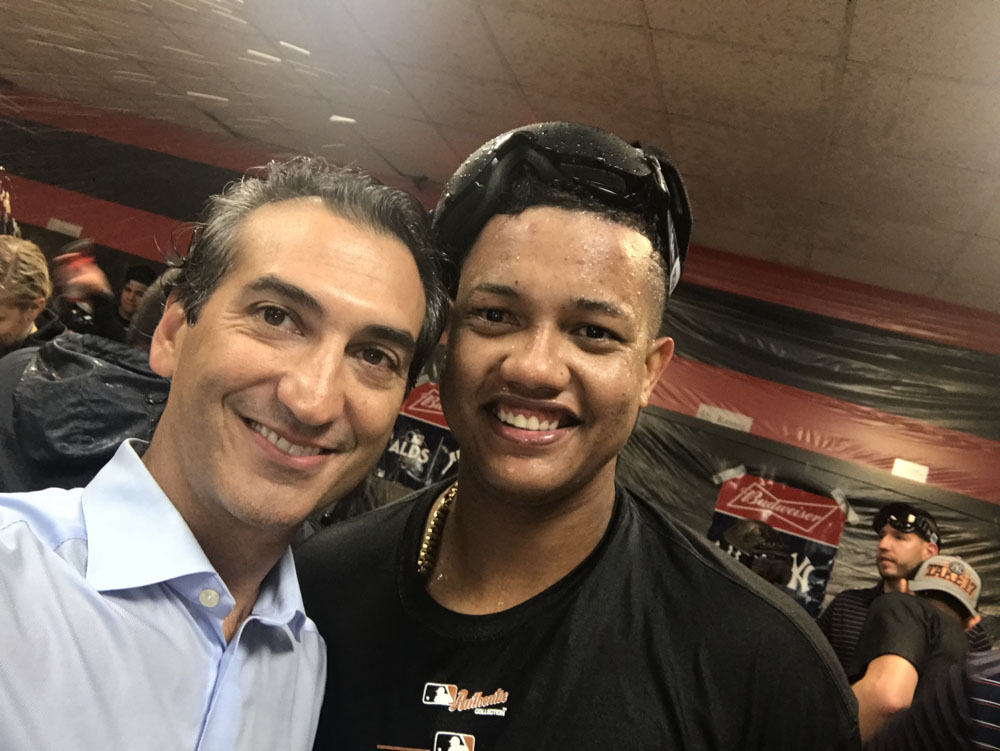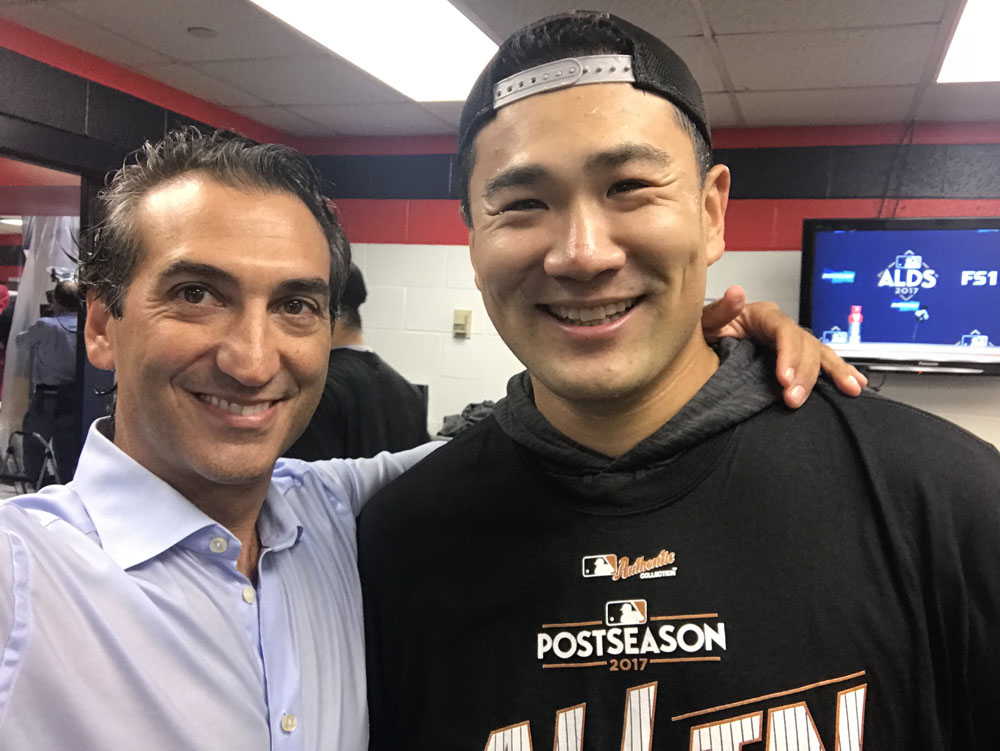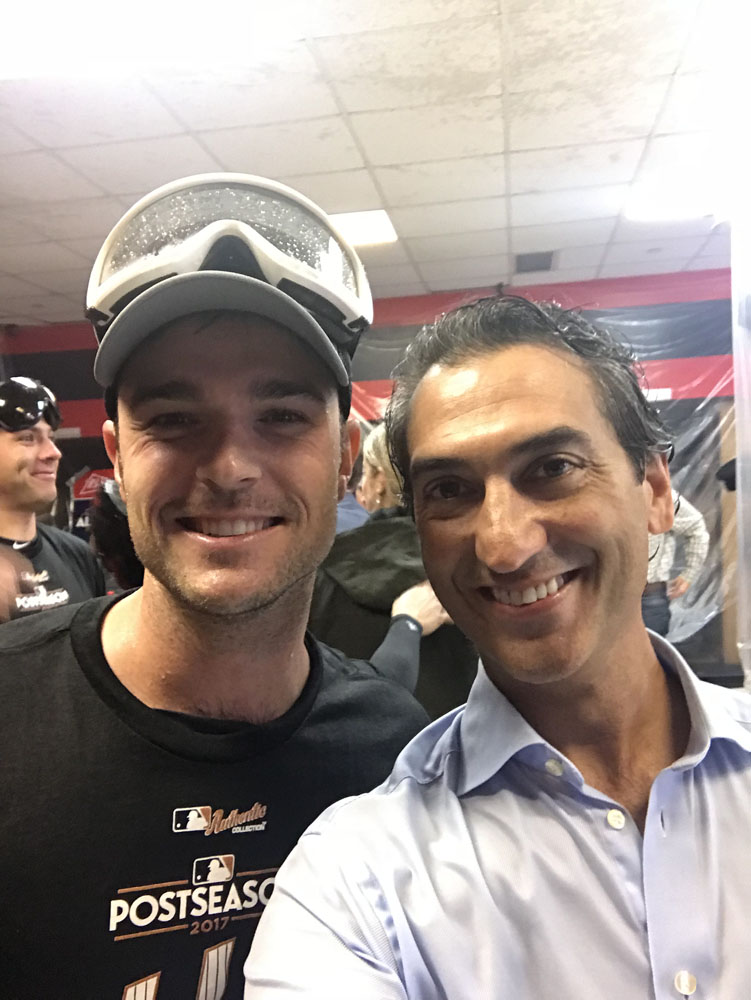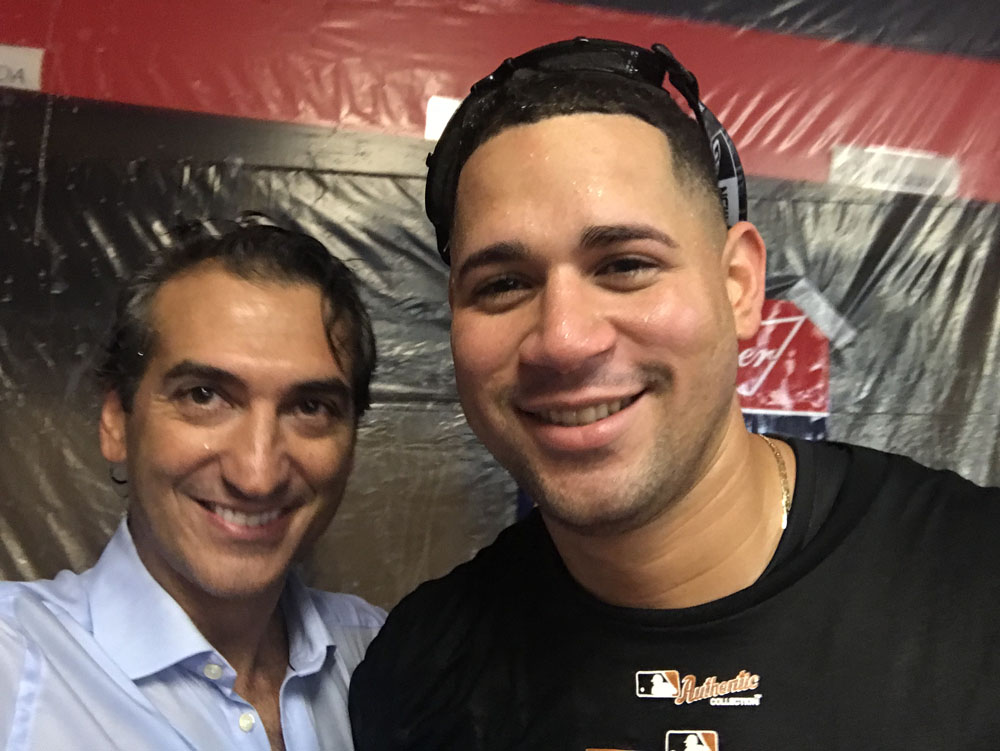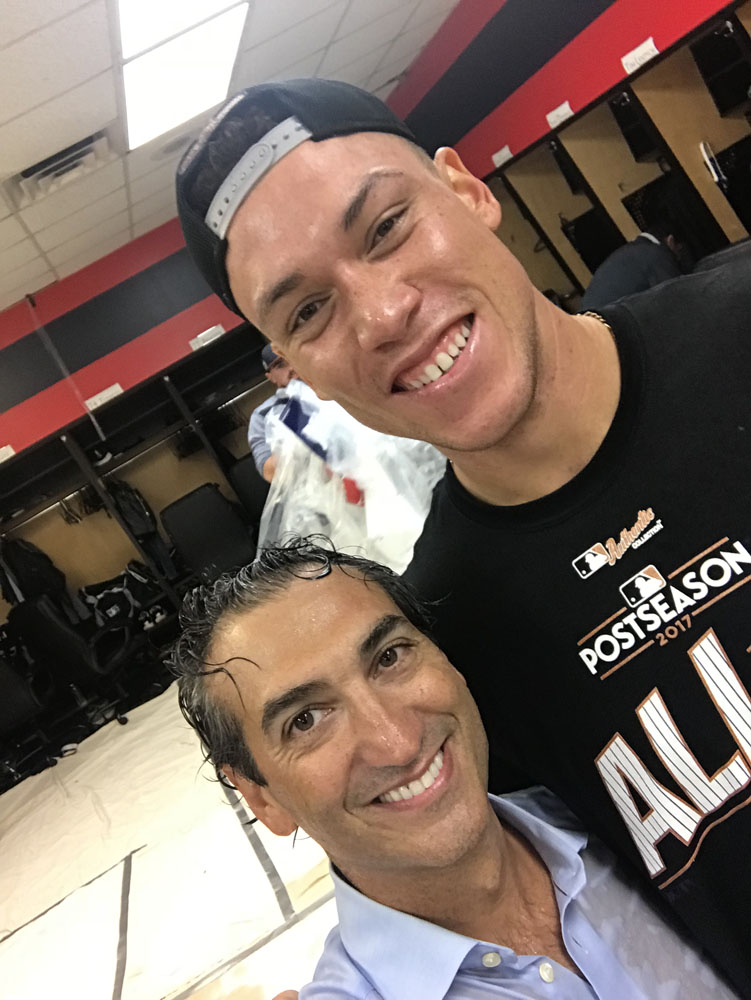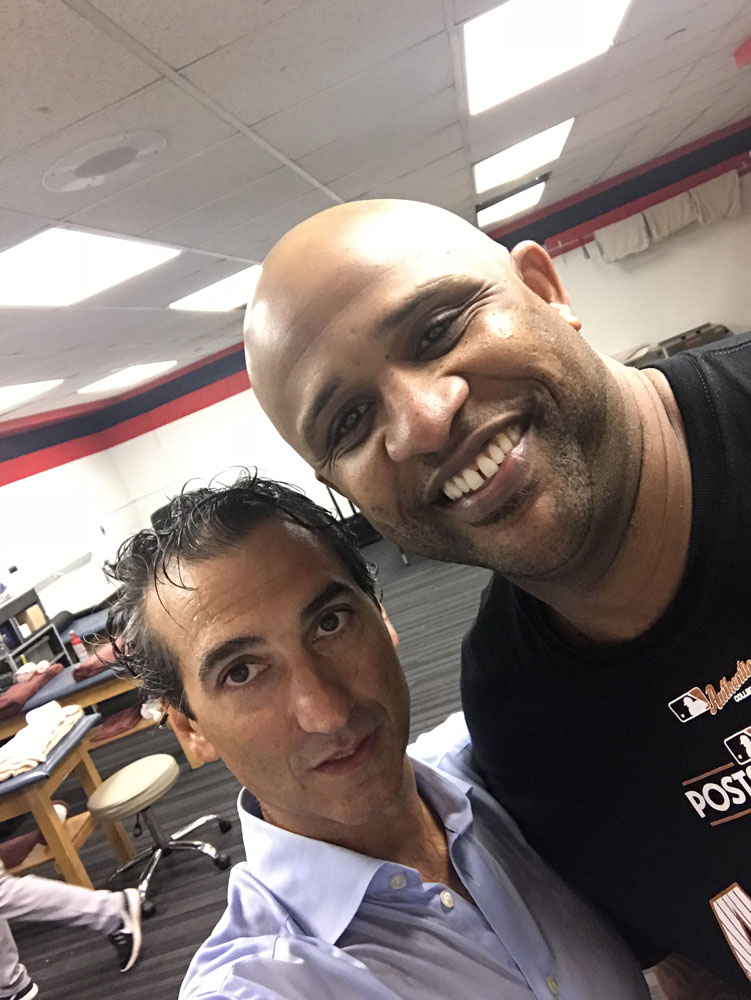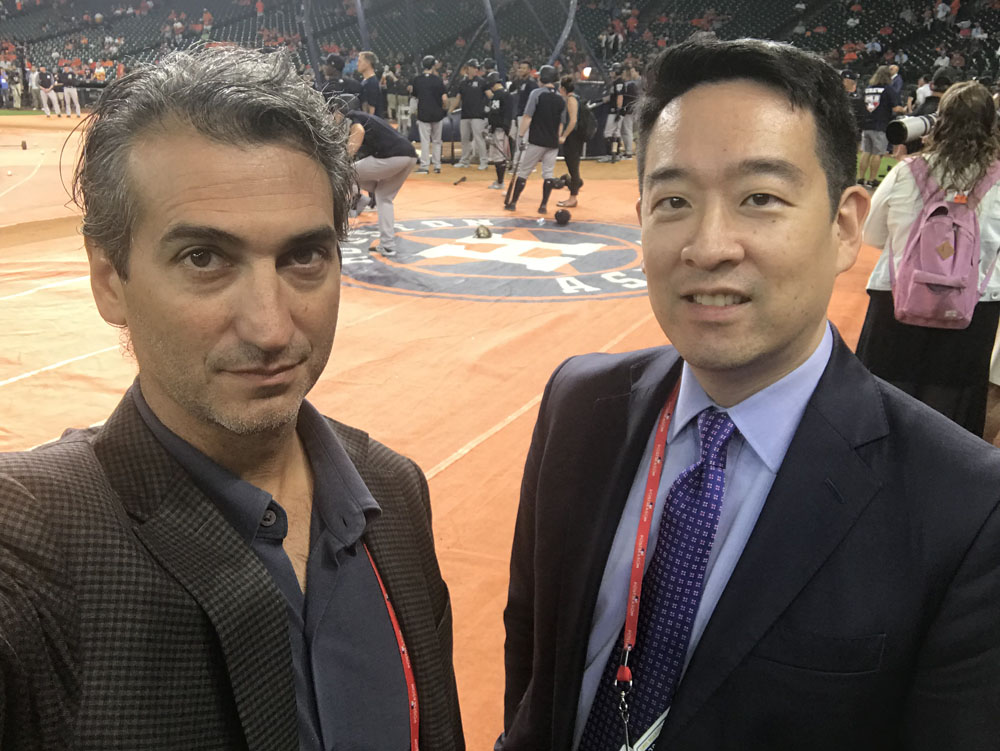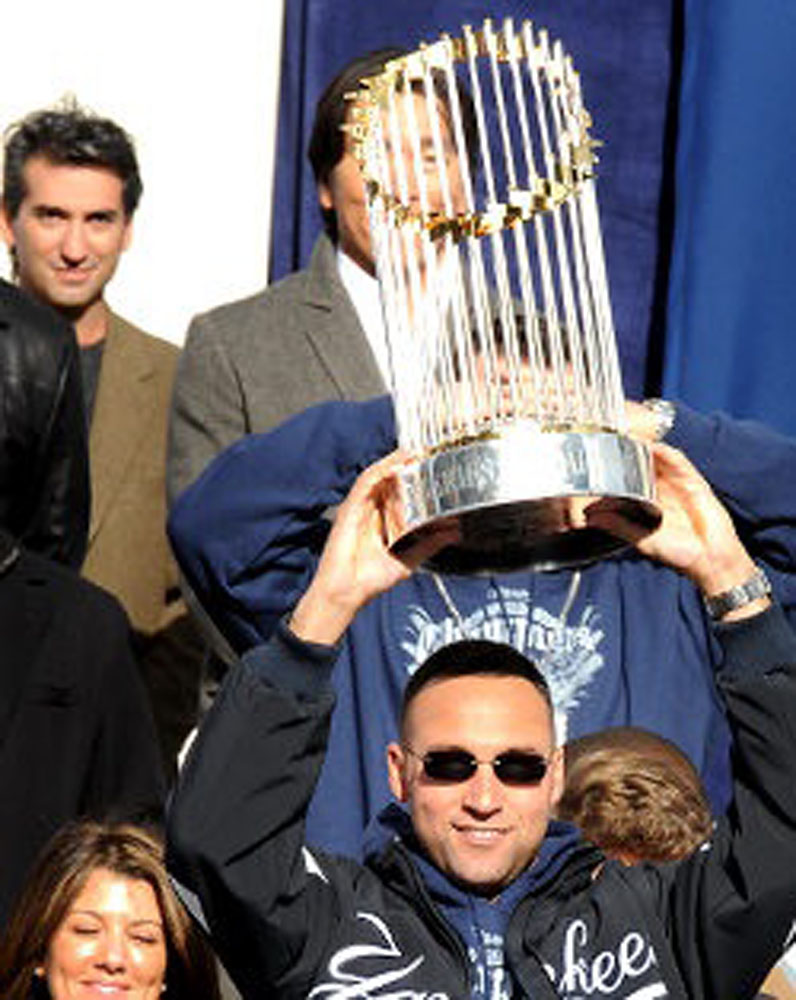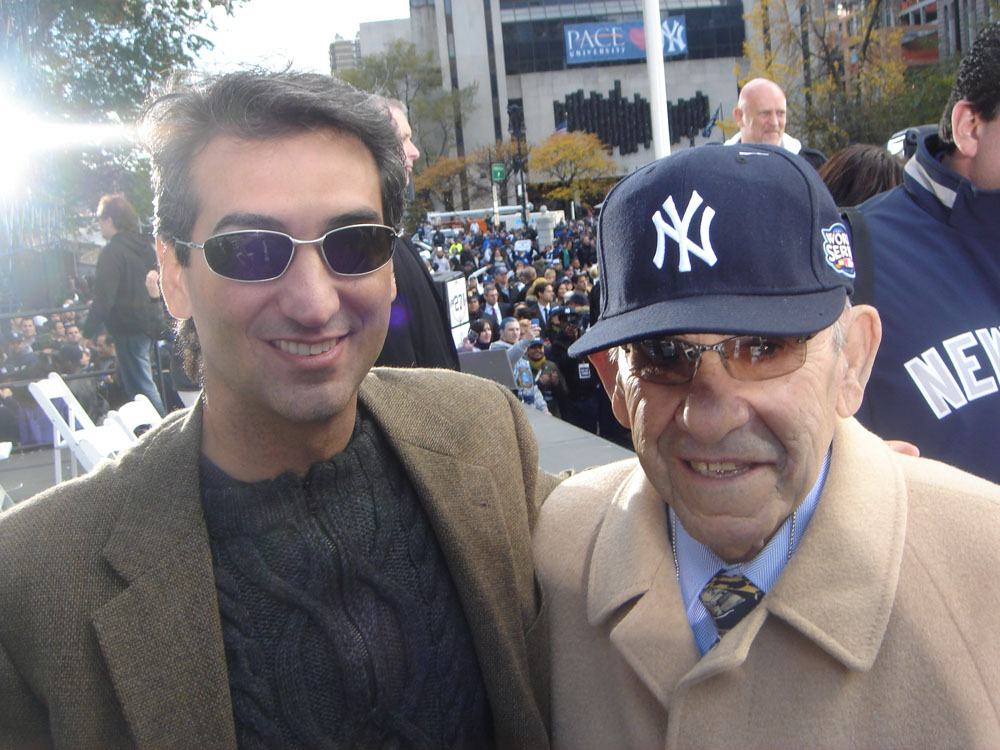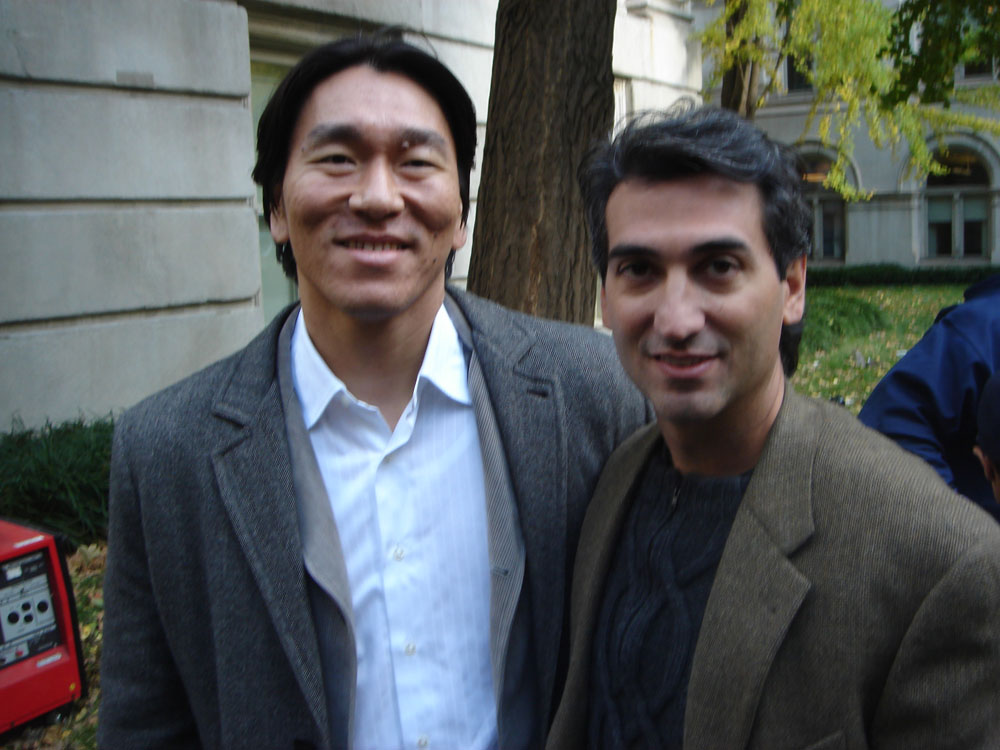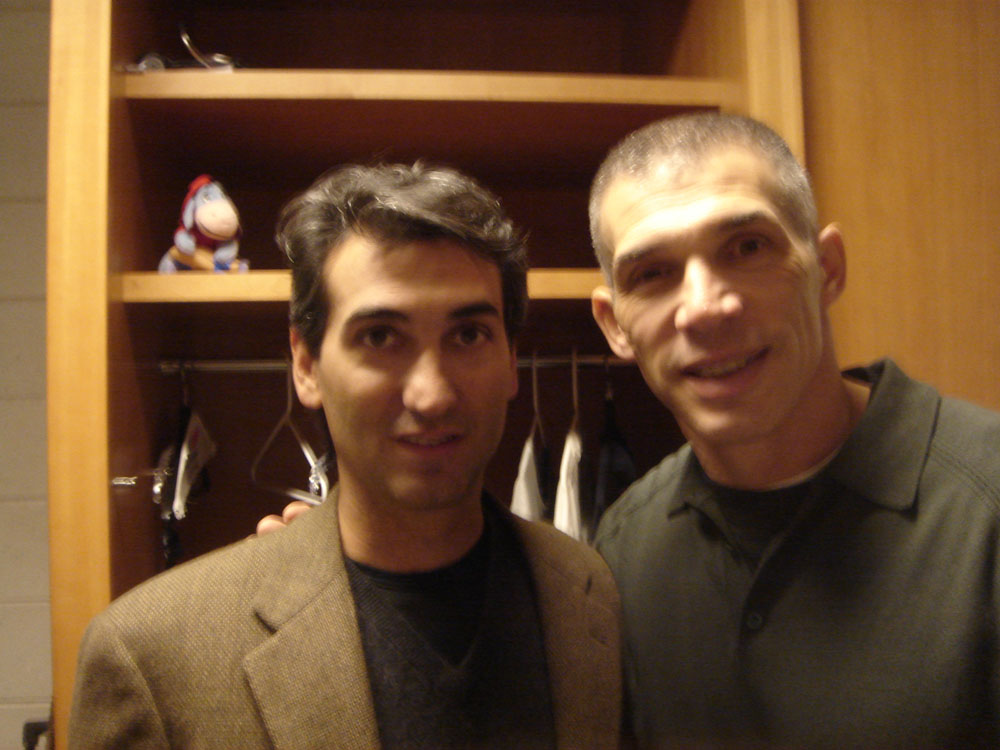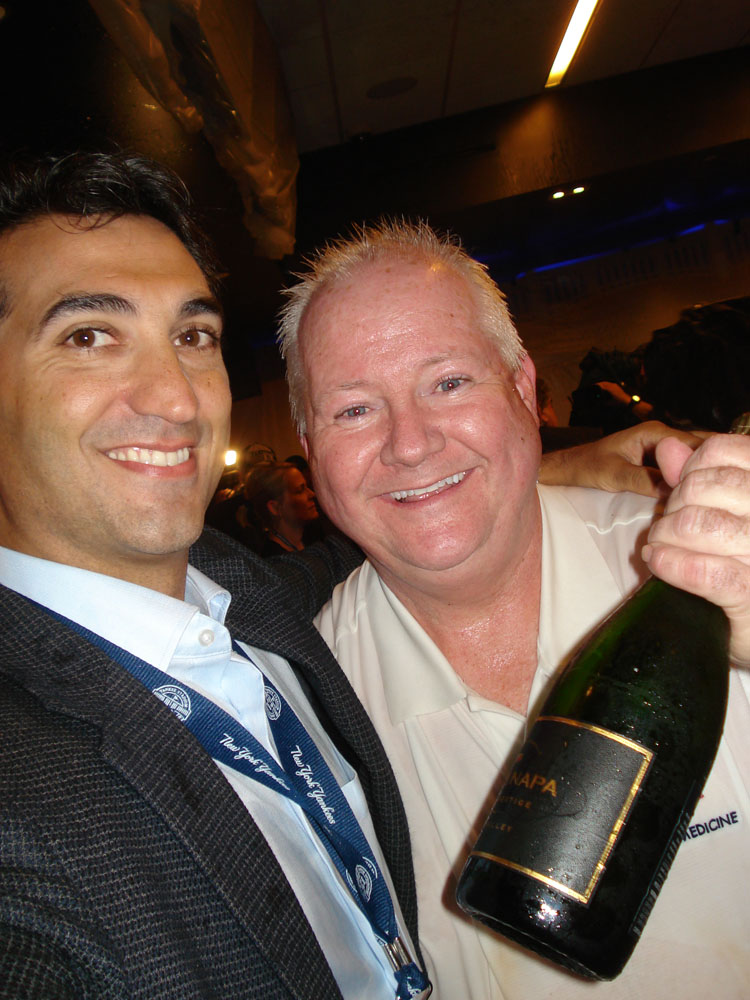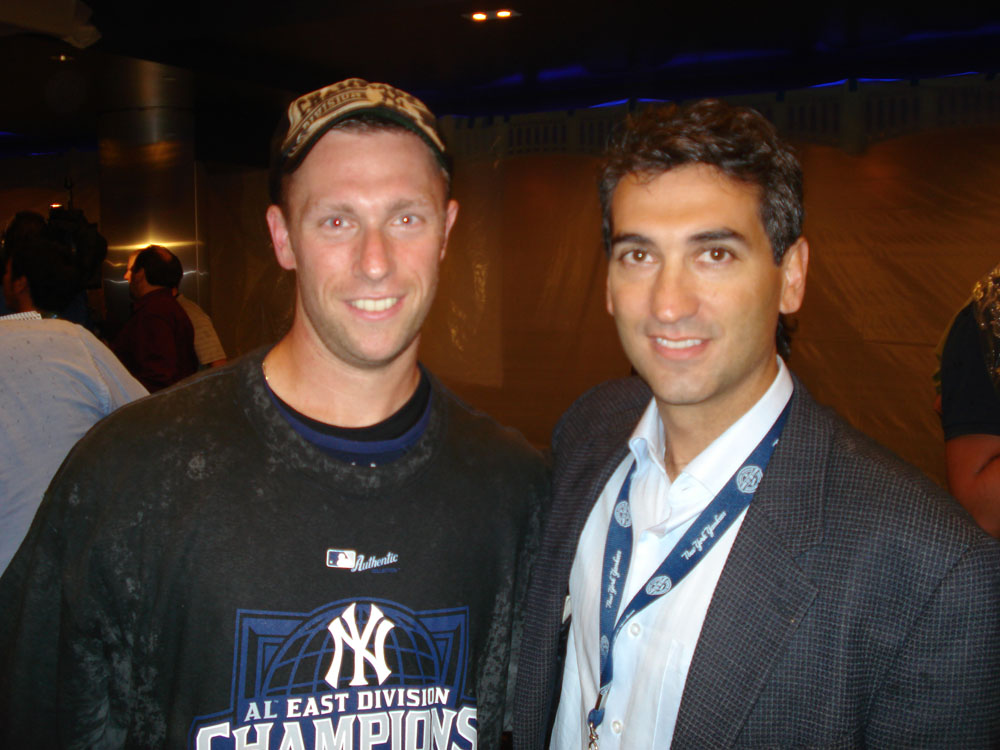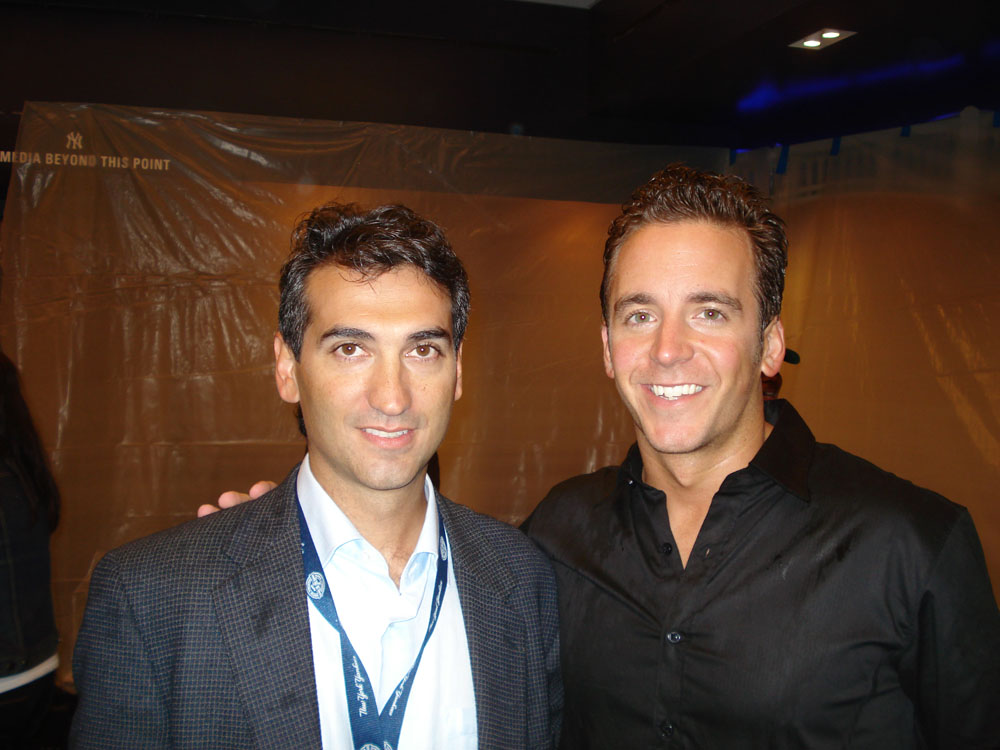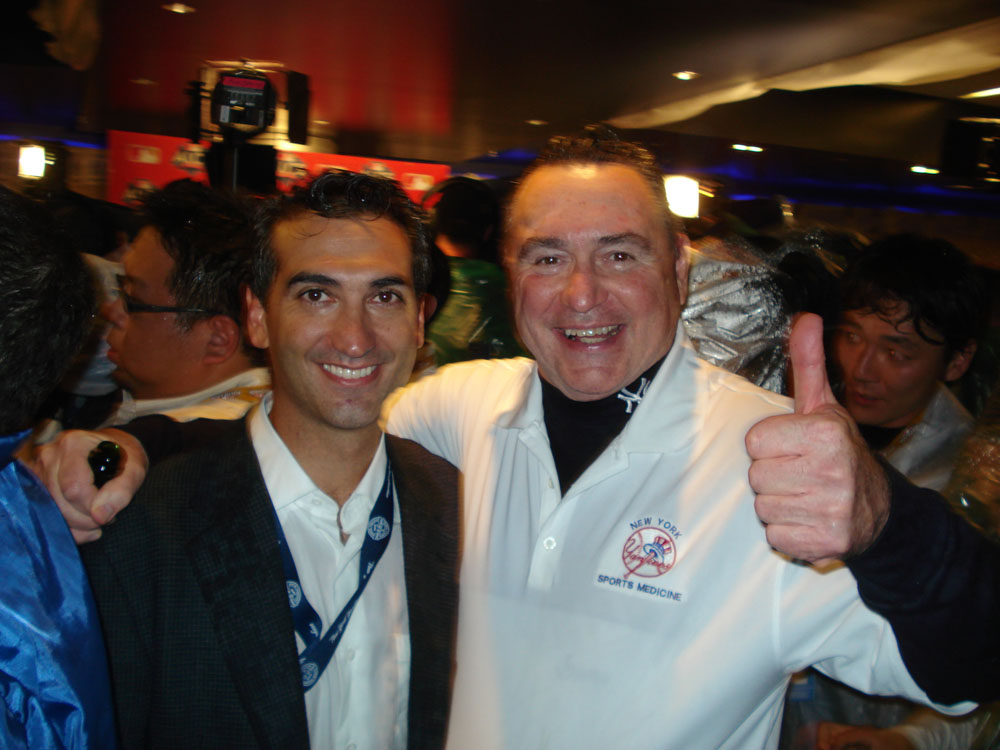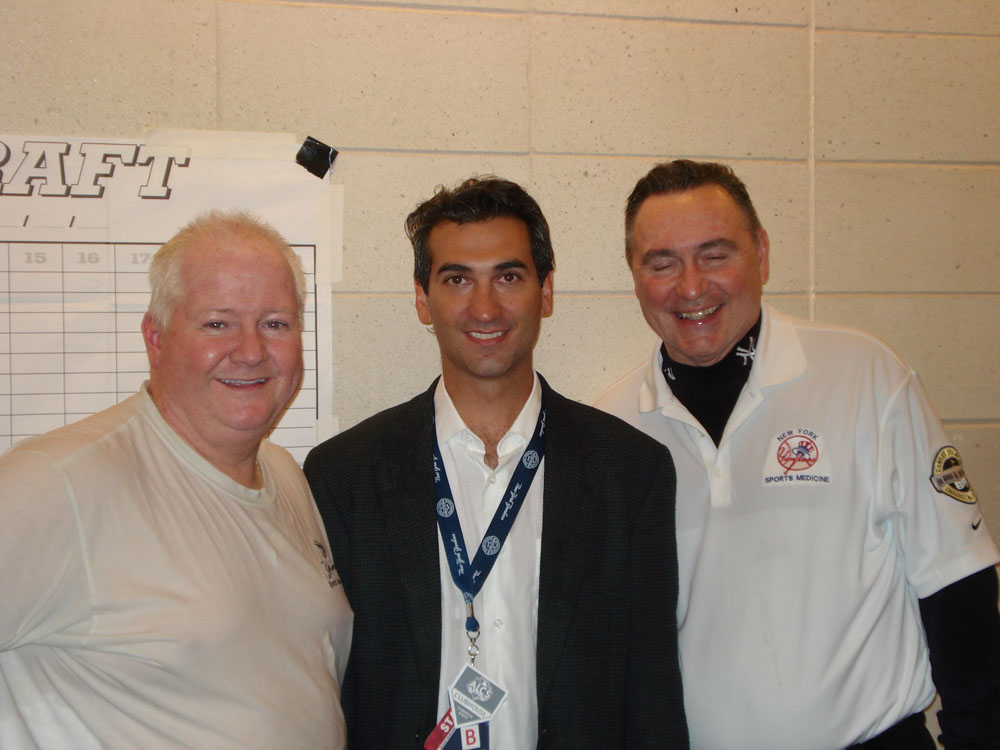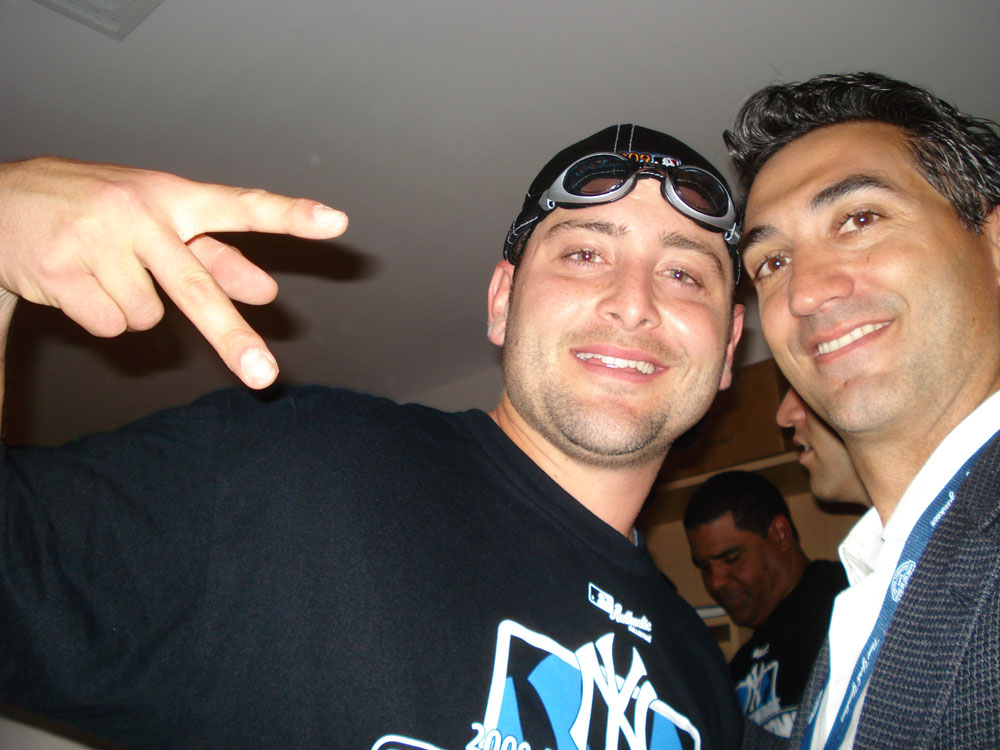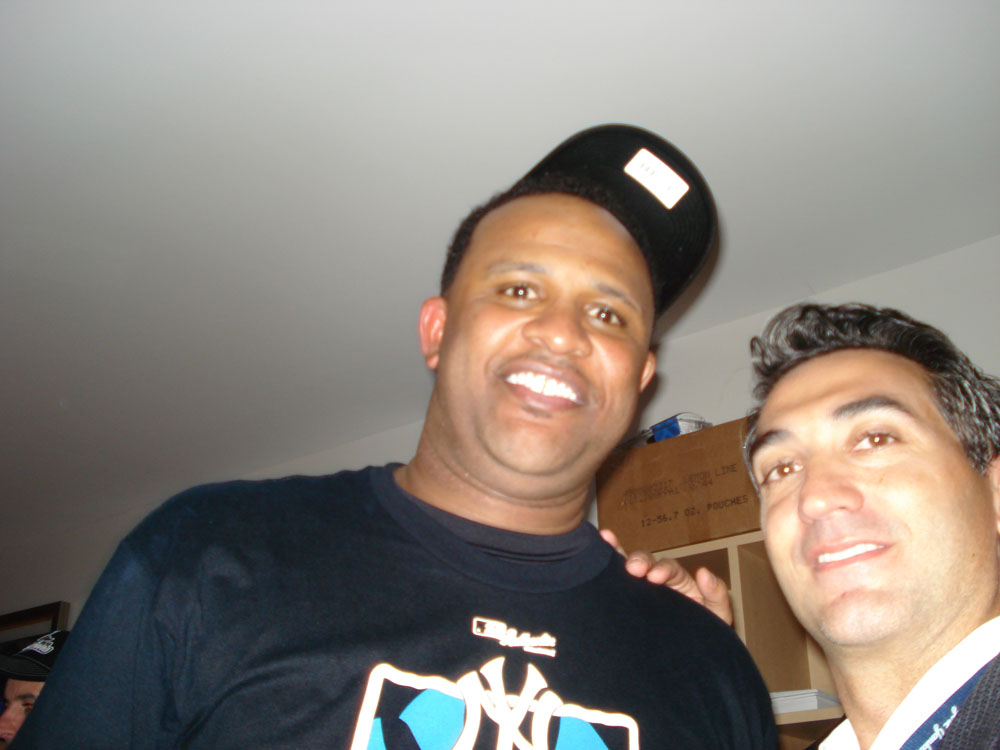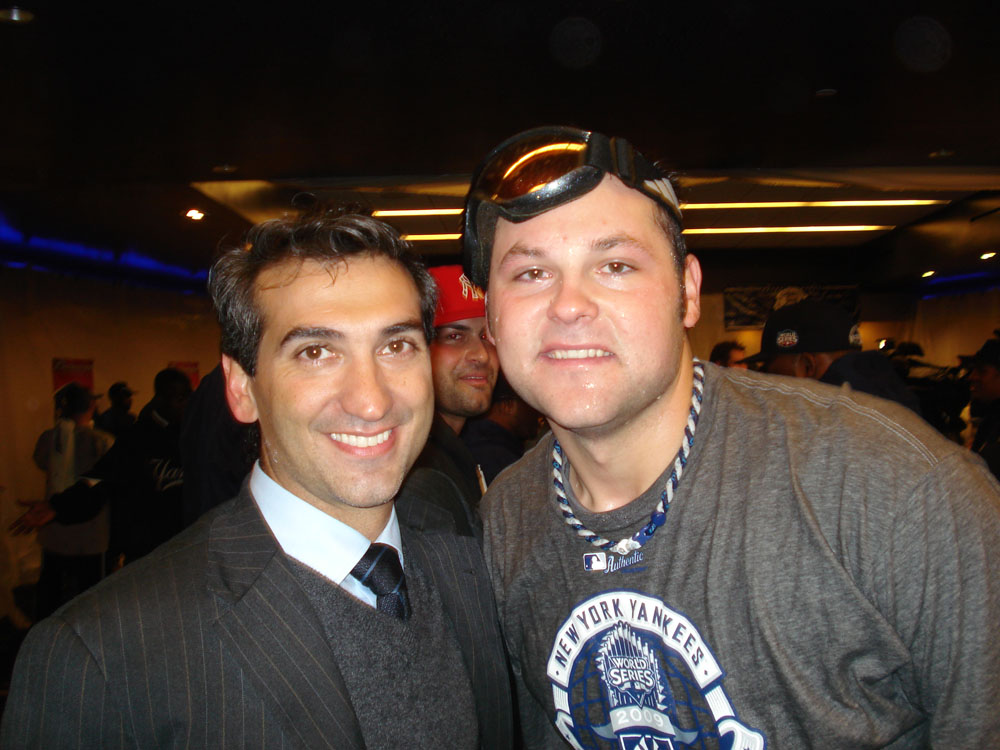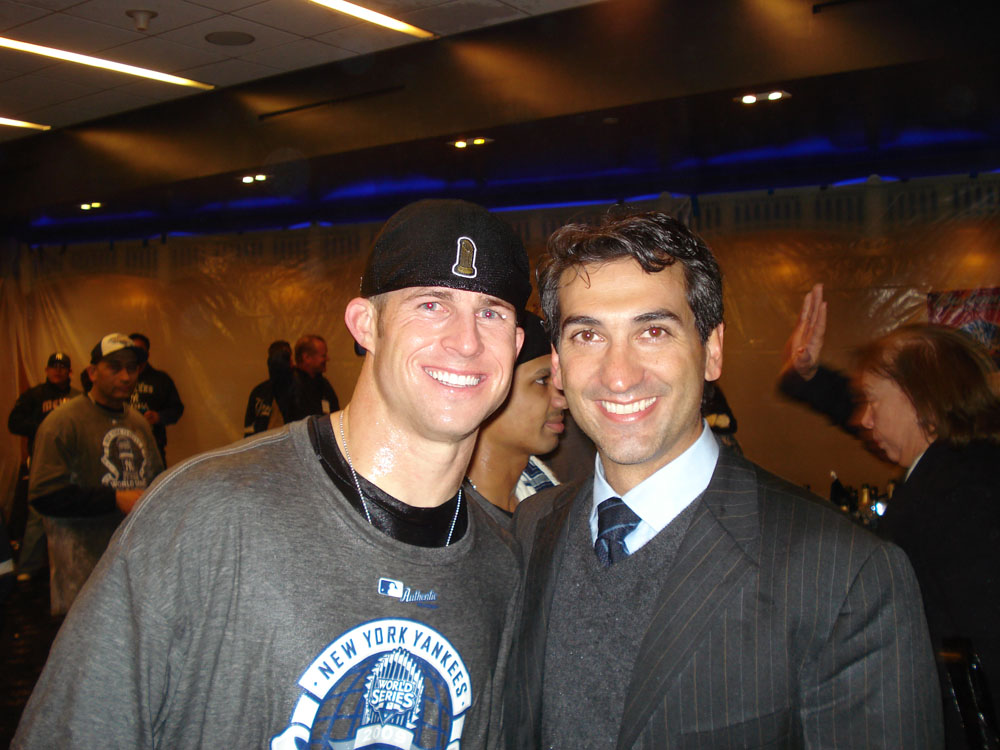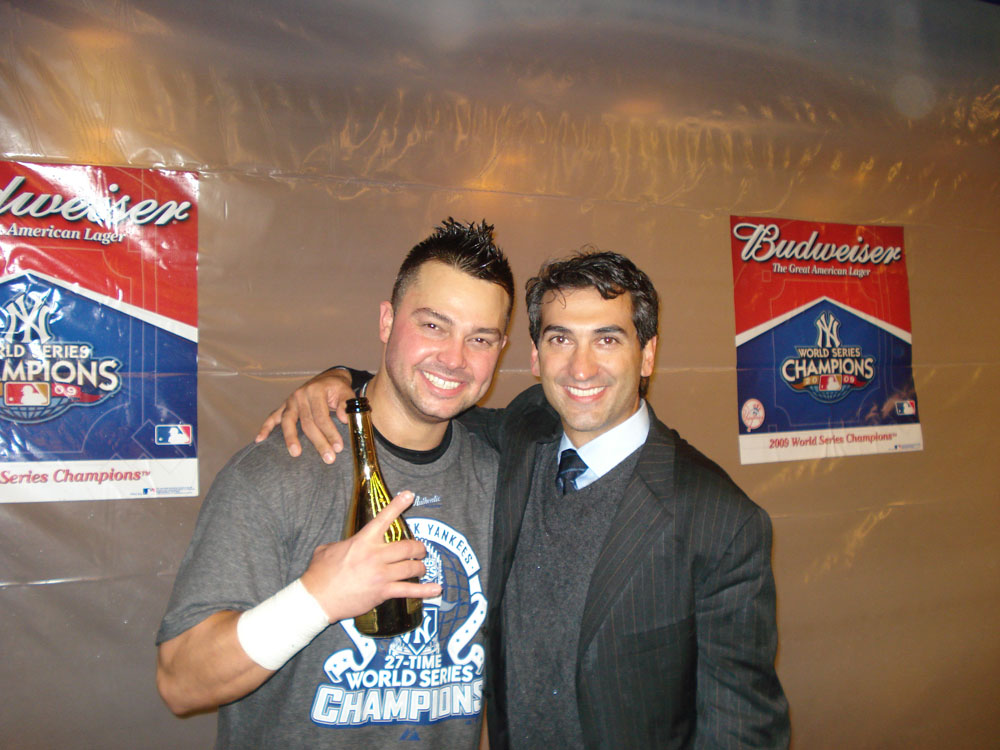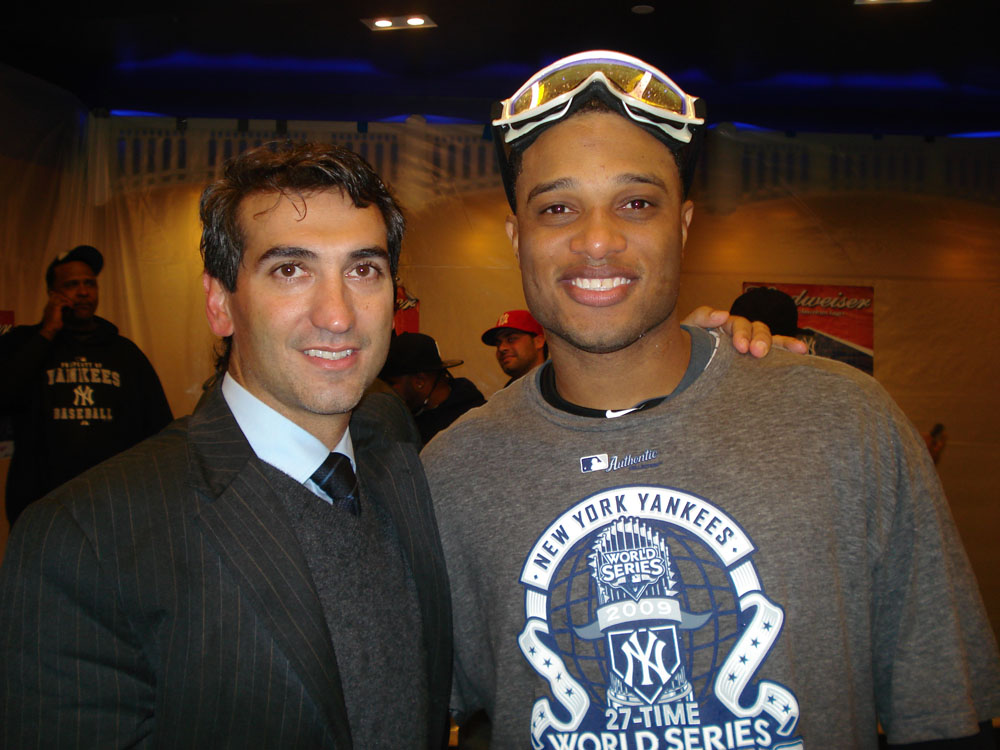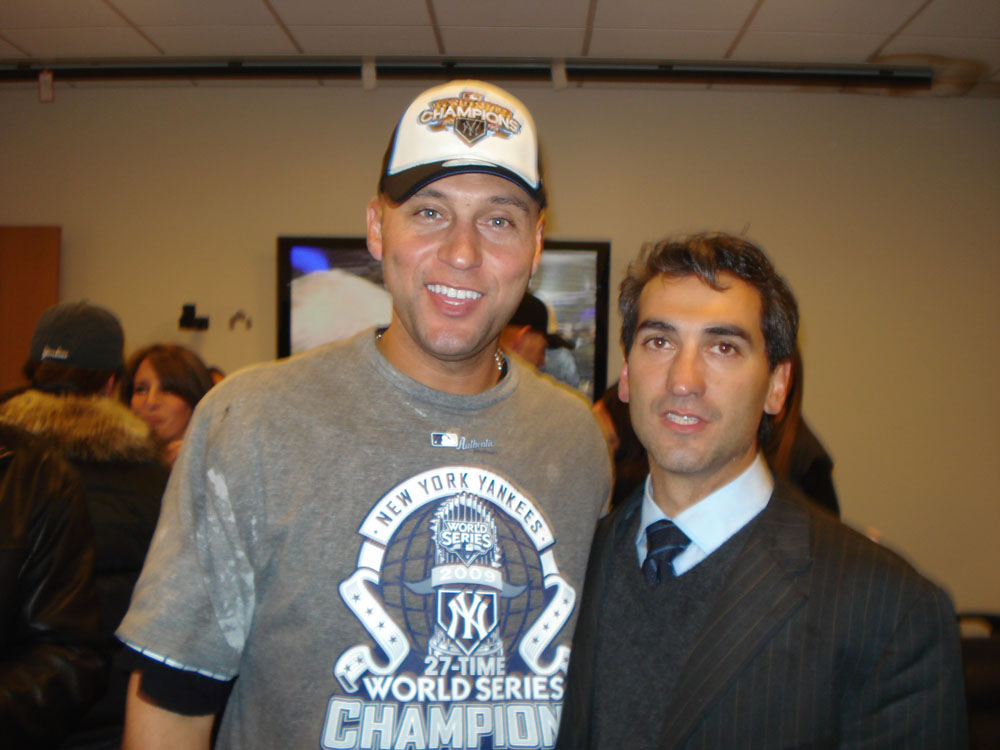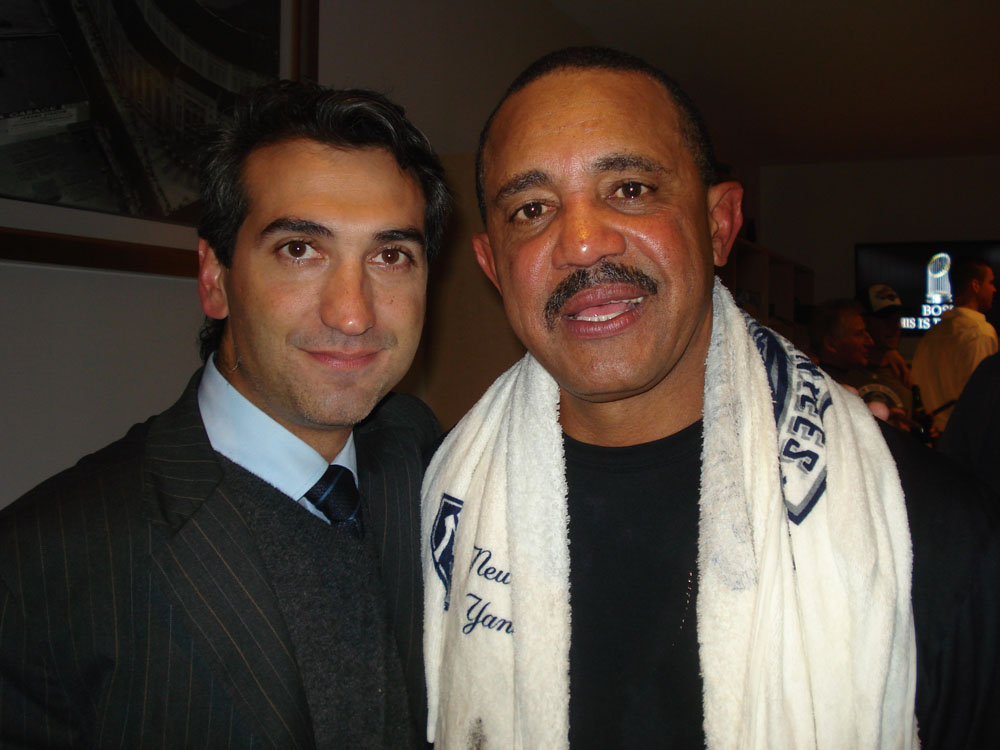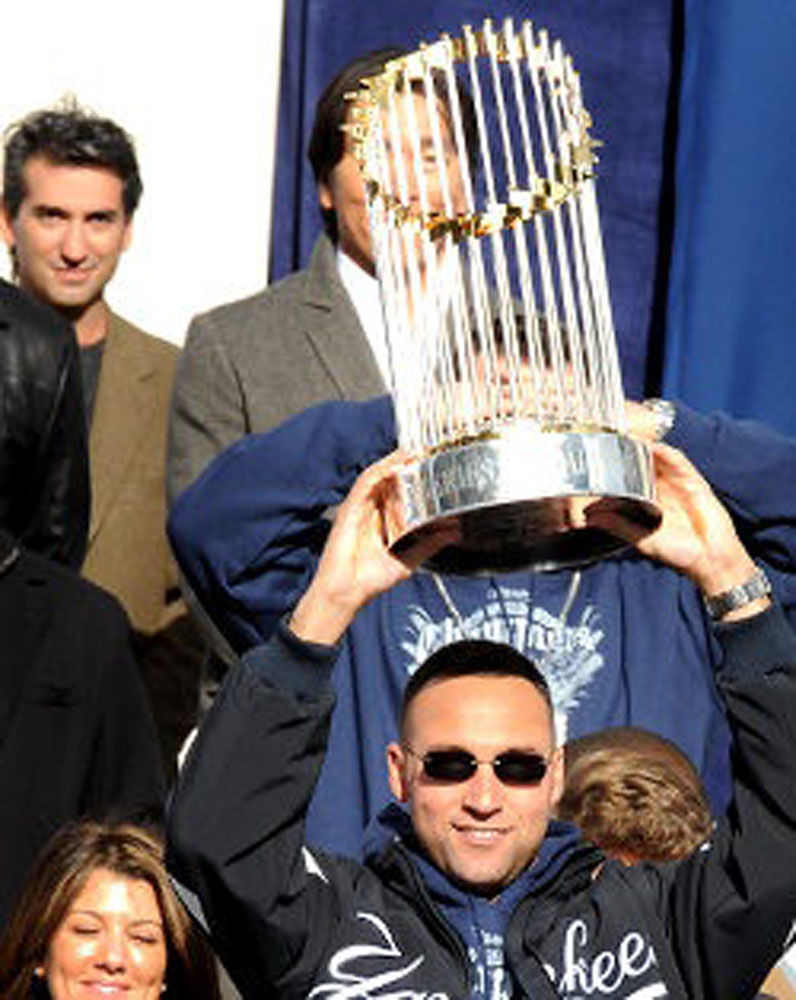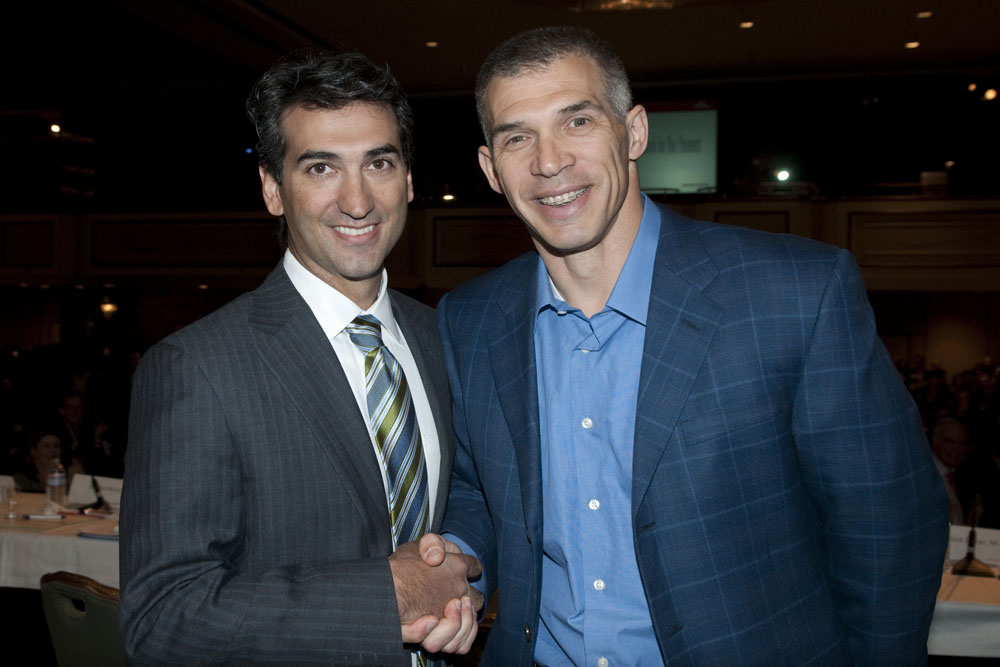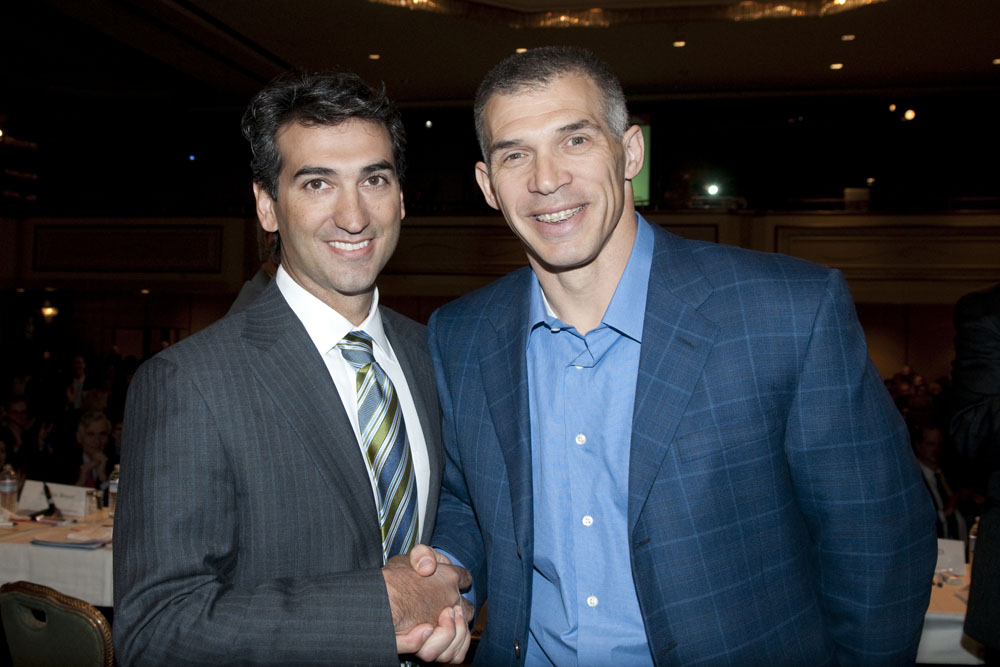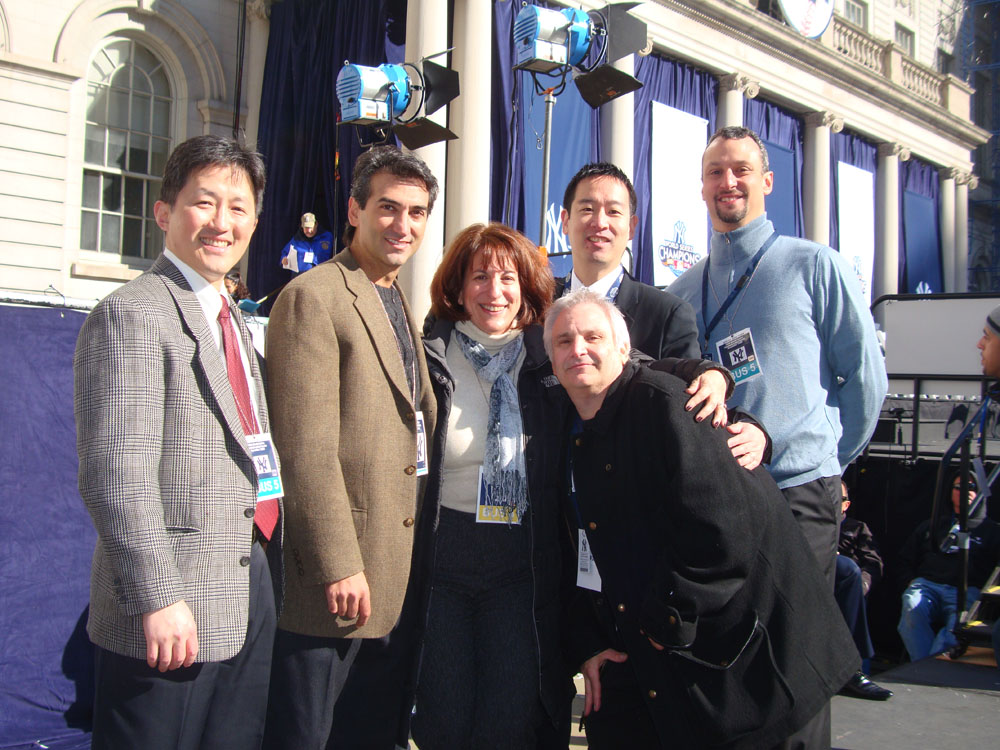Yankees Timeline

NY Yankees Head Team Physician

Christopher Ahmad is the Head Team Physician for the New York Yankees. He began working with the Yankees in midseason in 2008, and since then, has regularly dealt with players’ sprains, fractures, soreness, pulls, bruises, ligament tears and other injuries that go hand-and-hand with playing baseball for a Major League Team.
The Yankees Brian Cashman said, “One of the things that initially drew us to Dr. Ahmad was his vast experience in diagnosing and treating athletes who perform at the highest level of sports. As our head team physician, he has been thorough, thoughtful and dedicated to improving his craft.”
After earning his undergraduate degree in mechanical engineering at Columbia, his medical degree at New York University, and completing his residency at Columbia Orthopaedics, Ahmad was selected for the sports-medicine fellowship at the Kerlan-Jobe Orthopedic Clinic in Los Angeles. There, he assisted treatment for the LA Dodgers and was mentored by Frank Jobe, the originator of the “Tommy John” Surgery, where the ulnar collateral ligament, or UCL, is surgically reconstructed and can often return the player to pre-injury performance.
Over the years Dr. Ahmad has improved his craft and is considered one of the world’s preeminent Tommy John surgeons, winning multiple research awards and publishing many scores of book chapters and hundreds of journal articles on elbow, shoulder, and sports medicine. He is president elect of MLB Team Physicians association, member of MLB Pitch smart program, and co-founder of The Baseball Health Network.
Each year, Dr. Ahmad treats hundreds of athletes in the New York City area and beyond, and whether they play professional sports or on a more recreational level, he is committed to helping athletes of all ability levels to return to the game they love.
To schedule an appointment, please click here or call: (212) 305-4565.
BORN
- March 25, 1968
UNDERGRADUATE MAJOR
- Mechanical Engineering
COLLEGE SPORTS PLAYED
- Columbia University Varsity Soccer (4 Years)
YANKEES TEAM DOCTOR
- Since 2009
FELLOWSHIP
- Sports Medicine Fellowship at the Kerlan-Jobe Orthopedic Clinic, working under Frank Jobe, the originator of the Tommy John surgery.
PLAYERS TREATED
- Carlos Beltran, Brett Gardner, CC Sabathia, Masahiro Tanaka, Derek Jeter, Mark Teixeira, Nathan Eovaldi, Chase Whitley
New York Yankees Pictures
Head Team Physician Interview
Question: How did you become the Yankees Head Team Physician?
In 2008 I was approached by the Chairman of Orthopedic Surgery at Columbia University to begin working with the Yankees as the assistant team physician. Prior to 2008, I had dedicated great effort to the improvement of baseball medicine and made breakthroughs for Tommy John injury prevention and surgical treatment. I had been working with multiple colleges and high schools, and had established major new concepts in treating and preventing elbow injuries in baseball players of all levels. Therefore, Dr. Louis Bigliani chose to approach me to deliver such expertise to the New York Yankees.
Immediately, I enjoyed a great relationship with head athletic trainer at the time, Gene Monahan. We worked together with Yankee Players, diagnosing them, treating them and keeping them on the field. At the end of the 2008 season I was asked to begin the 2009 season as the head team physician. It was during my rookie year as the head team physician that the Yankees went on to win the World Series in 2009.
Question: What are your responsibilities as the Yankees Head Team Physician?
I have tremendous responsibilities as the head team physician for the New York Yankees. Much of the responsibility is dedicated to in-season game coverage and injury management. I cover approximately 80 home games a year and travel with the team during the playoffs. During games I sit in a dedicated doctor’s office just inside the Gene Monahan athletic training room within the stadium. It’s in this office that I evaluate injured players before games often to determine if they are capable of playing. During games injuries are evalulated immediately and as an example, a pitcher may walk off the mound during the third inning because of a new pain experienced in his elbow. That pitcher would be brought straight to the athletic training room and to the doctor’s office, where I would perform a history and physical examination. Appropriate testing would be done immediately, such as MRI scans. We provide expeditious diagnosis and treatment strategies.
In addition to game coverage, I provide counseling on potential new players for the Yankees, such as draft picks and free agents, with regards to their health status. This requires reviewing records, imaging studies, and predicting the health of these athletes. The Yankees have numerous minor league affiliates for which I also provide care for. If injured, minor-league players may fly in from different areas of the country to come see me in my office at Columbia or Yankee Stadium.
I work closely with the athletic training staff—Steve Donohue, the head athletic trainer and Tim Lentych and Michael Schuk, both assistant athletic trainers. We coordinate care with strength and conditioning coaches, massage therapists, mental conditioning coaches, and nutritionists. Our medical staff is a full complement of specialists. I also work closely with Mark Littlefield, who is the head medical coordinator for player development in Tampa, Florida.
Question: What has been most rewarding as Yankee Head Team Physician?
The most rewarding aspect of being a Head Team Physician is the ability to help an injured athlete keep their dream alive for that season and career. Being able to help an athlete prevent injuries in the first place is also rewarding. Unfortunately many players, especially pitchers, will suffer injuries that require time off from playing and some players’ injuries may even require surgery, such as Tommy John surgery. Many players often express extreme gratitude for the care they receive. This is the most fulfilling aspect of being a Team Physician.
Question: What are your biggest challenges as Yankees Head Team Physician?
Some of the greatest challenges as a team physician for the New York Yankees is managing injuries that garner tremendous media attention. There are numerous individuals involved with an injured player, including the player himself (most importantly), the player’s family, the player’s agent, the coaching staff, front office staff, ownership, media, and the fans. The diagnoses of injuries are sometimes challenging, however the most challenging aspect of baseball health is determining the most best treatment plan that must be individualized for a given player based on his pathology, wishes, and seasonal and career factors. Sometimes the best treatment choice for a player is not the most popular.
Question: Why are there so many Tommy John Surgeries in professional baseball?
Tommy John surgery saw a tremendous spike in the year 2014. But Bud Seelig, the Commissioner of baseball at that time, instituted a task force to study and develop strategies to improve injury prevention in this area. I was asked to join this committee along with other reputable physicians such as Dr. James Andrews. We have been meeting on a regular basis and designing research studies, as well as immediate action steps. The situation related to injury to the ulnar collateral ligament is complex but is certainly related to velocity pitching, volume of pitching, recovery, and fatigue. The ulnar collateral ligament is like a wire hanger and if stressed at the same point too many times, it will snap. In addition, as more and more players have undergone Tommy John surgery and we’re seeing a spike in second-time Tommy John surgery. The analogy is to that of a car that’s out of alignment – changing the wheels will work for a period of time, but wheels will wear out again unless the alignment is corrected.
Question: How has being the Yankees Physician helped you take care of college and high school baseball players?
I can see why many people believe that taking care of the New York Yankees is a full-time job, but it’s not. In fact, I usually start my day at 6:30AM and either see patients in the office or I am in the operating room performing surgery. It’s not until later that I make my way to the ballpark, leaving the hospital at 5PM to get to the Stadium at 6PM for a 7PM game. During the day I see patients from all backgrounds that compete at various levels of athletics, including high school and college baseball players. Taking care of elite baseball players has allowed me to set up an infrastructure for rapid assessment and diagnosis of injuries, which often includes obtaining MRI scans and other tests that can be applied to athletes of all levels. In addition, I have a team of athletic trainers and rehab specialists that allow me to perform a head-to-toe exam on a given baseball player and not just focus on their elbow and shoulder. We can also reveal hip, core, trunk and muscle imbalances that can also be attributed to their injury. The specialists that work on the professional level athletes can also help me with developing athletes. Creating this team approach that works so well for the professional athlete is no available to the aspiring high school and collegiate baseball player.
Question: I’ve heard you are involved with The Baseball Health Network. What exactly is that?
The Baseball Health Network has a specific mission to bring together the different specialists in baseball health to optimize strategy for injury prevention and injury treatment for baseball players of every level. This is accomplished through a team approach of pitching coaches, baseball coaches, physical therapists, strength and conditioning coaches, and orthopedic surgeons, where we take advantage of our most powerful tool to reduce injuries – educating parents, players, and coaches in our communities. Our motto is keeping them on the field and also ahead of the field. We have a terrific website that is a resource of ongoing educational material. In addition, we conduct regularly scheduled seminars with practical question-and-answer periods. (www.baseballhealthnetwork.com)
